Green Tea
How to submit an article:
- Registered users can submit any published journal article that has a unique DOI (Digital Object Identifier) name or link to Research Hub.
- For example, you can paste the full DOI link:
https://doi.org/10.1109/5.771073or just the DOI name:10.1109/5.771073into the field above and click submit. - The person who is first to submit a valid article to Research Hub will forever be credited for it, and every article submission earns you +6 Research Points.
Sub-Topics:
Related Topics
Published research studies are articles that present the findings of original research that has undergone a peer-review process and has been made publicly available in scholarly journals, books or other media.

Long-Term Consumption of Green Tea Can Reduce the Degree of Depression in Postmenopausal Women by Increasing Estradiol
2023 Oct 25 Nutrients Wan Z, Qin X, Tian Y, Ouyang F, Wang G, Wan Q
Cohort Study Depression Green Tea Anti-Inflammatory Sleep OestradiolLong-term consumption of green tea can potentially lessen the risk of depression in postmenopausal women by decreasing inflammation and boosting estradiol levels.
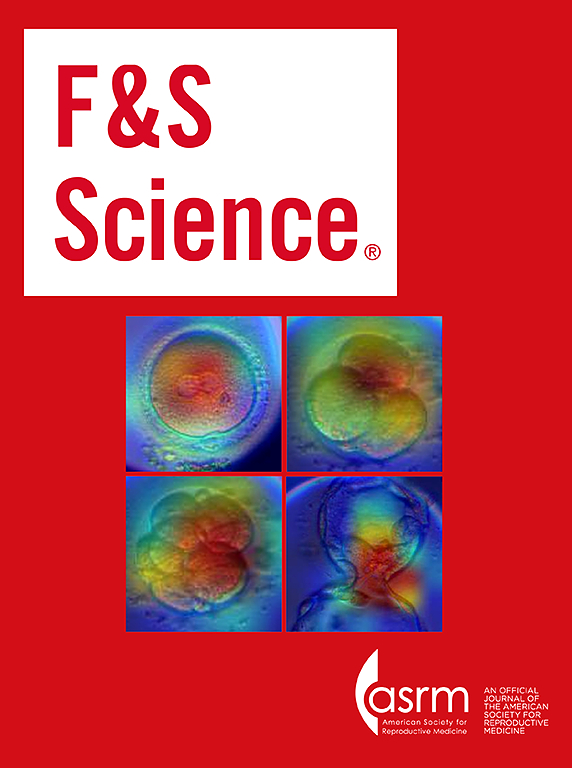
The combination of natural compounds Crila and epigallocatechin gallate (EGCG) showed enhanced antiproliferative effects on human uterine fibroid cells compared to single treatments.
2023 Sep F&S Science Bai T, Ali M, Somers B, Yang Q, McKinney S, Al-Hendy A
Network Pharmacology EGCGCombining Crila with green tea extract (EGCG) has been found to synergistically hinder the growth of human uterine fibroid cells.

Green Tea and Benign Gynecologic Disorders: A New Trick for An Old Beverage?
2023 Mar 16 Nutrients Hazimeh D, Massoud G, Parish M, Singh B, Segars J, Islam MS
Review Article Green Tea Period PainGreen tea helps alleviate symptoms in multiple benign gynecological disorders, primarily due to a compound called Epigallocatechin-3-gallate.
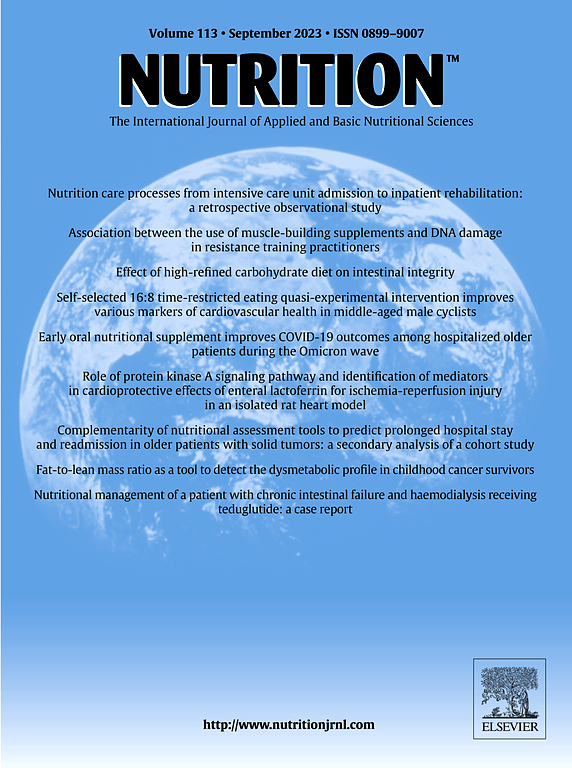
Green tea consumption and the risk of stroke: A systematic review and meta-analysis of cohort studies
2023 Mar Nutrition Wang ZM, Chen B, Zhou B, Zhao D, Wang LS
Systematic Review Meta-Analysis Green Tea Stroke RiskOur dose-response analysis indicated that moderate green tea consumption (500–1000 mL/d) was associated with a 21% to 24% lower risk of stroke.
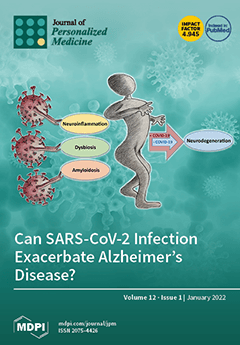
The Association of Four Natural Molecules—EGCG, Folic Acid, Vitamin B12, and HA—To Counteract HPV Cervical Lesions: A Case Report
2023 Mar 22 Journal of Personalized Medicine Grandi G, Botticelli L, Fraia PD, Babalini C, Masini M, Unfer V
Case Report Hyaluronic Acid Vitamin B12 Cervical Cancer HA Folic Acid Cervical Dysplasia Green Tea EGCG HPVThe combination of epigallocatechin gallate, vitamin B12, folic acid, and hyaluronic acid could effectively counter precancerous lesions of the uterine cervix caused by HPV infections.
Research insights are moderated by the Research Hub team and offer an at-a-glance overview of interesting research findings.

2023 Nutrients
Long-term consumption of green tea can potentially lessen the risk of depression in postmenopausal women by decreasing inflammation and boosting estradiol levels.
Cohort Study Anti-Inflammatory Depression Oestradiol Sleep
Long-Term Consumption of Green Tea Can Reduce the Degree of Depression in Postmenopausal Women by Increasing Estradiol
Wan Z, Qin X, Tian Y, Ouyang F, Wang G, Wan Q

2023 F&S Science
Combining Crila with green tea extract (EGCG) has been found to synergistically hinder the growth of human uterine fibroid cells.
Network Pharmacology EGCG
The combination of natural compounds Crila and epigallocatechin gallate (EGCG) showed enhanced antiproliferative effects on human uterine fibroid cells compared to single treatments.
Bai T, Ali M, Somers B, Yang Q, McKinney S, Al-Hendy A

2023 Journal of Personalized Medicine
The combination of epigallocatechin gallate, vitamin B12, folic acid, and hyaluronic acid could effectively counter precancerous lesions of the uterine cervix caused by HPV infections.
Case Report Cervical Cancer Cervical Dysplasia EGCG Folic Acid HA
The Association of Four Natural Molecules—EGCG, Folic Acid, Vitamin B12, and HA—To Counteract HPV Cervical Lesions: A Case Report
Grandi G, Botticelli L, Fraia PD, Babalini C, Masini M, Unfer V

2023 Nutrients
Green tea helps alleviate symptoms in multiple benign gynecological disorders, primarily due to a compound called Epigallocatechin-3-gallate.
Review Article Period Pain
Green Tea and Benign Gynecologic Disorders: A New Trick for An Old Beverage?
Hazimeh D, Massoud G, Parish M, Singh B, Segars J, Islam MS
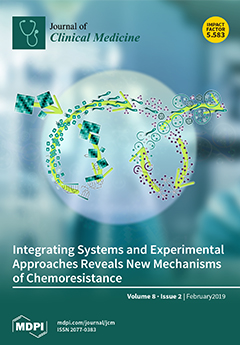
2023 Journal of Clinical Medicine
A combination of epigallocatechin gallate, folic acid, vitamin B12, and hyaluronic acid may effectively clear HPV infections and cervical lesions in women.
Randomised Controlled Trial EGCG Folic Acid HPV
Evaluating the Efficacy of Pervistop®, a New Combination Based on EGCG, Folic Acid, Vitamin B12 and Hyaluronic Acid on Patients with Human Papilloma Virus (HPV) Persistent Infections and Cervical Lesions: A Pilot Study
Aragona C, Bezerra Espinola MS, Bilotta G, Porcaro G, Calcagno M
Review Articles
Review articles summarise and critically evaluate the current state of research on a specific topic or field by synthesising multiple primary research studies.

Green Tea and Benign Gynecologic Disorders: A New Trick for An Old Beverage?
2023 Mar 16 Nutrients Hazimeh D, Massoud G, Parish M, Singh B, Segars J, Islam MS
Review Article Green Tea Period PainGreen tea helps alleviate symptoms in multiple benign gynecological disorders, primarily due to a compound called Epigallocatechin-3-gallate.

Green tea consumption and the risk of stroke: A systematic review and meta-analysis of cohort studies
2023 Mar Nutrition Wang ZM, Chen B, Zhou B, Zhao D, Wang LS
Systematic Review Meta-Analysis Green Tea Stroke RiskOur dose-response analysis indicated that moderate green tea consumption (500–1000 mL/d) was associated with a 21% to 24% lower risk of stroke.

Green Tea Catechins Attenuate Neurodegenerative Diseases and Cognitive Deficits
2022 Nov 06 Molecules Afzal O, Dalhat MH, Altamimi ASA, Rasool R, Alzarea SI, Almalki WH, et al.
Review Article Alzheimer's Disease Neurodegenerative Diseases Cognitive FunctionGreen tea's catechins demonstrate therapeutic effects against neurodegenerative diseases via anti-inflammatory, antioxidant actions, and activating diverse brain cellular pathways.

Green Tea Catechins: Nature’s Way of Preventing and Treating Cancer
2022 Sep 14 International Journal of Molecular Sciences Farhan M
Review Article Green Tea AnticancerCompounds found in green tea, especially EGCG, show significant anti-cancer activity and hold promise as potential anticancer drugs or adjuvants to standard chemotherapy.
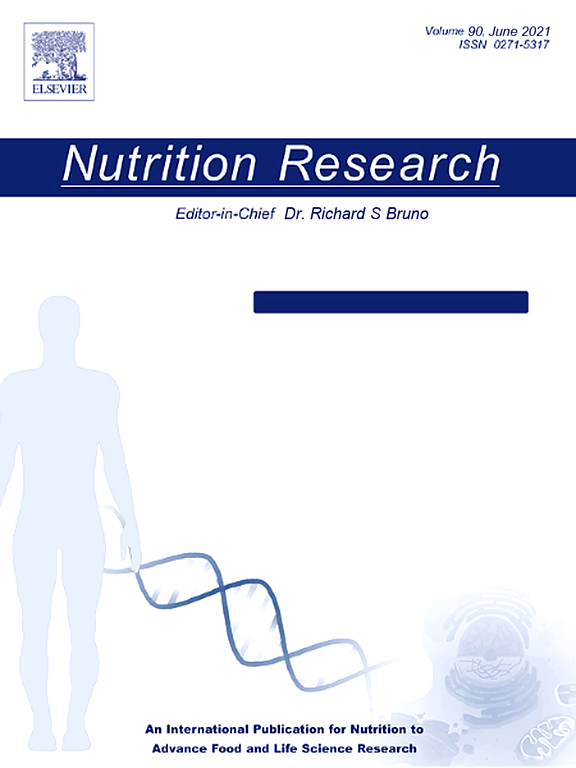
Green tea promotes weight loss in women with polycystic ovary syndrome: Systematic review and meta-analysis
2022 Aug Nutrition Research Colonetti L, Grande AJ, Toreti IR, Ceretta LB, da Rosa MI, Colonetti T
Meta-Analysis Systematic Review Obesity Body Weight Green Tea PCOSGreen tea supplementation can significantly reduce body weight in women with polycystic ovary syndrome, hence potentially beneficial in its clinical management.
Clinical Trials
Clinical trials are research studies that involve people and are conducted to evaluate the safety and efficacy of new treatments or interventions, such as drugs, medical devices, or behavioural therapies.

Evaluating the Efficacy of Pervistop®, a New Combination Based on EGCG, Folic Acid, Vitamin B12 and Hyaluronic Acid on Patients with Human Papilloma Virus (HPV) Persistent Infections and Cervical Lesions: A Pilot Study
2023 Mar 10 Journal of Clinical Medicine Aragona C, Bezerra Espinola MS, Bilotta G, Porcaro G, Calcagno M
Randomised Controlled Trial HPV Folic Acid EGCGA combination of epigallocatechin gallate, folic acid, vitamin B12, and hyaluronic acid may effectively clear HPV infections and cervical lesions in women.

The use of green tea in the treatment of symptomatic uterine fibroids
2022 Apr 02 International Journal of Health Sciences Badawy A, Shady NW, Maklad SMA, Ait-Allah AS
Randomised Controlled Trial EGCGGreen tea extract, specifically epigallocatechin gallate, can inhibit tumor growth and enhance the quality of life in women suffering from uterine fibroids.
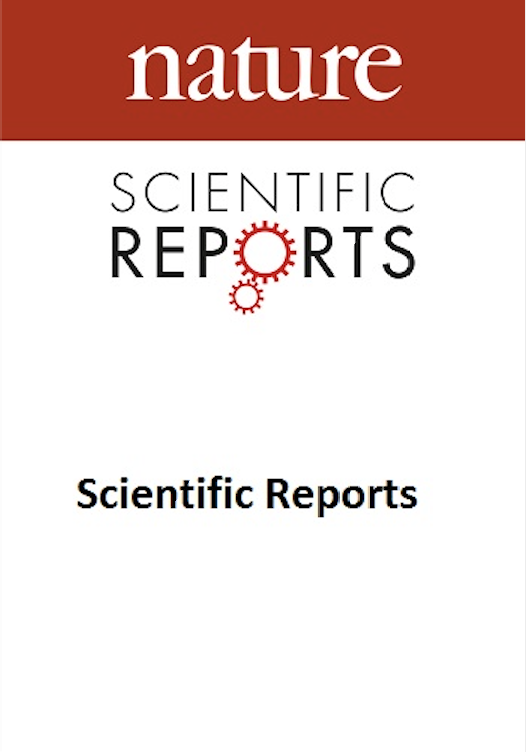
The combined effect of green tea and α-glucosyl hesperidin in preventing obesity: a randomized placebo-controlled clinical trial
2021 Sep 24 Scientific Reports Yoshitomi R, Yamamoto M, Kumazoe M, Fujimura Y, Yonekura M, Shimamoto Y, et al.
Clinical Study Randomised Controlled TrialConsumption of green tea enriched with a citrus polyphenol, α-glucosyl hesperidin, can prevent weight gain and reduce body mass index, especially in individuals under 50 years.

Effects of Matcha Green Tea Powder on Cognitive Functions of Community-Dwelling Elderly Individuals
2020 Nov 26 Nutrients Sakurai K, Shen C, Ezaki Y, Inamura N, Fukushima Y, Masuoka N, et al.
Randomised Controlled Trial Brain HealthDaily supplementation of Matcha Green Tea Powder is found to enhance cognitive functions in elderly women.

Effect of Daily Intake of Green Tea Catechins on Cognitive Function in Middle-Aged and Older Subjects: A Randomized, Placebo-Controlled Study
2020 Sep 17 Molecules Baba Y, Inagaki S, Nakagawa S, Kaneko T, Kobayashi M, Takihara T
Randomised Controlled Trial Green Tea CatechinDaily consumption of decaffeinated green tea catechins may enhance working memory.
Study Protocols
Published study protocols are detailed plans that outline the objectives, methodology, statistical analyses, and organisation of a research study that have been made publicly available for others to review and use as a reference.
Presentation Slides

Cohort Study
Long-term consumption of green tea can potentially lessen the risk of depression in postmenopausal women by decreasing inflammation and boosting estradiol levels.
Wan Z, Qin X, Tian Y, Ouyang F, Wang G, Wan Q

Network Pharmacology
Combining Crila with green tea extract (EGCG) has been found to synergistically hinder the growth of human uterine fibroid cells.
Bai T, Ali M, Somers B, Yang Q, McKinney S, Al-Hendy A

Case Report
The combination of epigallocatechin gallate, vitamin B12, folic acid, and hyaluronic acid could effectively counter precancerous lesions of the uterine cervix caused by HPV infections.
Grandi G, Botticelli L, Fraia PD, Babalini C, Masini M, Unfer V

Review Article
Green tea helps alleviate symptoms in multiple benign gynecological disorders, primarily due to a compound called Epigallocatechin-3-gallate.
Hazimeh D, Massoud G, Parish M, Singh B, Segars J, Islam MS

Randomised Controlled Trial
A combination of epigallocatechin gallate, folic acid, vitamin B12, and hyaluronic acid may effectively clear HPV infections and cervical lesions in women.
Aragona C, Bezerra Espinola MS, Bilotta G, Porcaro G, Calcagno M

Systematic Review
Our dose-response analysis indicated that moderate green tea consumption (500–1000 mL/d) was associated with a 21% to 24% lower risk of stroke.
Wang ZM, Chen B, Zhou B, Zhao D, Wang LS

Cohort Study
Heavy coffee consumption increases the risk of cardiovascular disease mortality in individuals with severe hypertension, while green tea consumption does not.
Teramoto M, Yamagishi K, Muraki I, Tamakoshi A, Iso H

Cohort Study
Epigallocatechin gallate (EGCG), a green tea component, showed potential in treating uterine fibroids and associated infertility without causing liver toxicity or folate deficiency.
Siblini H, Al-Hendy A, Segars J, González F, Taylor HS, Singh B, Flaminia A, Flores VA, Christman GM, Huang H, Johnson JJ, Zhang H

Review Article
Green tea's catechins demonstrate therapeutic effects against neurodegenerative diseases via anti-inflammatory, antioxidant actions, and activating diverse brain cellular pathways.
Afzal O, Dalhat MH, Altamimi ASA, Rasool R, Alzarea SI, Almalki WH, Murtaza BN, Iftikhar S, Nadeem S, Nadeem MS, Kazmi I

Review Article
Compounds found in green tea, especially EGCG, show significant anti-cancer activity and hold promise as potential anticancer drugs or adjuvants to standard chemotherapy.
Farhan M

Meta-Analysis
Green tea supplementation can significantly reduce body weight in women with polycystic ovary syndrome, hence potentially beneficial in its clinical management.
Colonetti L, Grande AJ, Toreti IR, Ceretta LB, da Rosa MI, Colonetti T
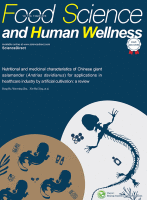
Systematic Review
Bioactive components in green tea have demonstrated potential neuroprotective effects and might play a role in preventing Alzheimer’s disease.
Lange KW, Lange KM, Nakamura Y

Systematic Review
Higher daily tea consumption, especially green tea, is linked to a lower risk of cerebral hemorrhage in adults.
Cheng P, Zhang J, Liu W, Sun Q, Fu Z, Lin H, Bi S, Zhu J

Randomised Controlled Trial
Green tea extract, specifically epigallocatechin gallate, can inhibit tumor growth and enhance the quality of life in women suffering from uterine fibroids.
Badawy A, Shady NW, Maklad SMA, Ait-Allah AS

Meta-Analysis
Tea supplements, especially green tea, significantly decrease fasting blood glucose and fasting insulin levels and reduce body weight in women with polycystic ovary syndrome.
Shen W, Pan Y, Jin B, Zhang Z, You T, Qu Y, Han M, Yuan X, Zhang Y
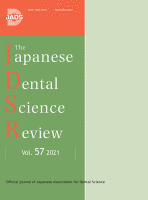
Systematic Review
Green tea treatment has shown potential in improving oral hygiene and gingival health, and reducing periodontitis and caries.
Mazur M, Ndokaj A, Jedlinski M, Ardan R, Bietolini S, Ottolenghi L
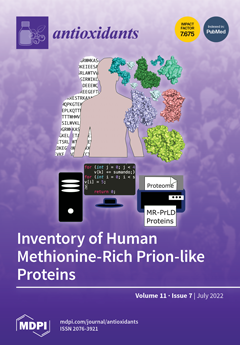
Systematic Review
Green tea supplementation improves total antioxidant capacity and impacts oxidative stress based on dose levels in adults.
Rasaei N, Asbaghi O, Samadi M, Setayesh L, Bagheri R, Gholami F, Soveid N, Casazza K, Wong A, Suzuki K, Mirzaei K

Clinical Study
Simultaneous administration of vitamin D and Epigallocatechin gallate significantly reduces the size of uterine fibroids in premenopausal women, and decreases menstrual flow duration.
Grandi G, Del Savio MC, Melotti C, Feliciello L, Facchinetti F
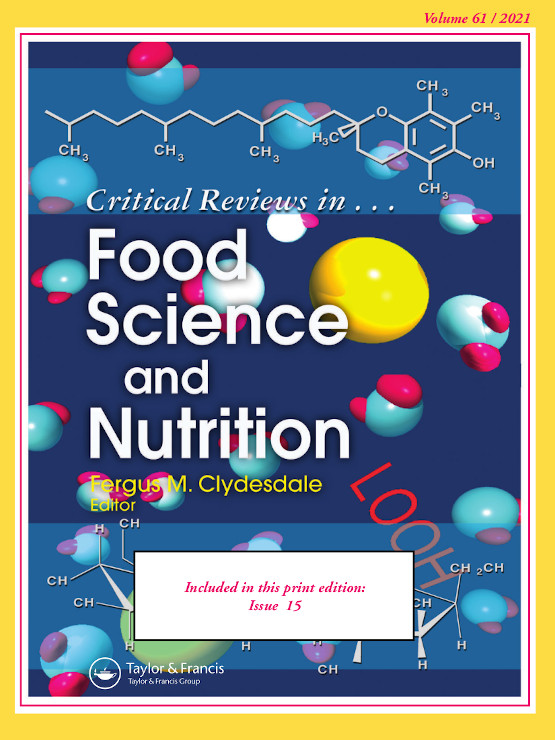
Review Article
Green tea and its component EGCG, demonstrate potential as a treatment for endometriosis by inhibiting growth, invasion, adhesion and angiogenesis.
Chen X, Man GCW, Hung SW, Zhang T, Fung LWY, Cheung CW, Chung JPW, Li TC, Wang CC

Clinical Study
Consumption of green tea enriched with a citrus polyphenol, α-glucosyl hesperidin, can prevent weight gain and reduce body mass index, especially in individuals under 50 years.
Yoshitomi R, Yamamoto M, Kumazoe M, Fujimura Y, Yonekura M, Shimamoto Y, Nakasone A, Kondo S, Hattori H, Haseda A, Nishihira J, Tachibana H
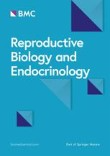
Systematic Review
Green tea extract could be considered a potential agent to attenuate PCOS complications mainly due to its effect on weight loss and glycemic levels.
Maleki V, Taheri E, Varshosaz P, Tabrizi FPF, Moludi J, Jafari-Vayghan H, Shadnoush M, Jabbari SHY, Seifoleslami M, Alizadeh M

Systematic Review
Green tea consumption has been found to be effective in preventing the contraction of influenza infections.
Rawangkan A, Kengkla K, Kanchanasurakit S, Duangjai A, Saokaew S
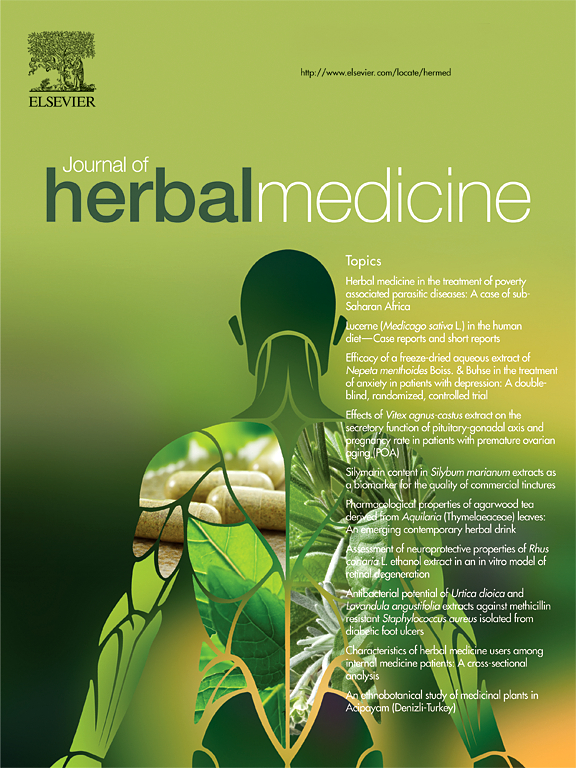
Clinical Study
Green tea therapy can significantly improve rheumatoid arthritis symptoms, correlating with changes in specific circulating serum molecules, miR-125b and miR-146a.
Al-Rawaf HA, Alghadir AH, Gabr SA

Review Article
There is a notable gap in scientific research on the potential health benefits and antioxidant activity of matcha tea compared to green tea.
Sivanesan I, Gopal J, Muthu M, Chun S, Oh JW

Review Article
Green tea and its chief bioactive component have the potential to improve certain female reproductive disorders such as endometriosis, polycystic ovary syndrome, and dysmenorrhea.
Kamal DAM, Salamt N, Zaid SSM, Mokhtar MH
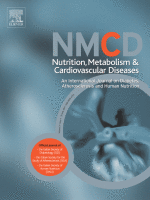
Systematic Review
Consumption of certain foods like rapeseed/canola oil, avocados, and turmeric can lead to moderate to large reductions in LDL cholesterol levels.
Schoeneck M, Iggman D

Review Article
Green tea, coffee, wine, and curry have beneficial health effects due to the polyphenols they contain, which possess both antioxidant and pro-oxidant properties.
Ohishi T, Fukutomi R, Shoji Y, Goto S, Isemura M
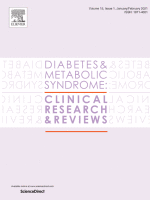
Systematic Review
The supplementary intake of green tea does not significantly affect blood glucose, fasting insulin, hemoglobin A1c, and insulin resistance in patients with type 2 diabetes mellitus.
Asbaghi O, Fouladvand F, Gonzalez MJ, Ashtary-Larky D, Choghakhori R, Abbasnezhad A

Review Article
Shaded gardening of Japanese matcha creates high-quality tea with unique compounds that can boost physical and mental health.
Kochman J, Jakubczyk K, Antoniewicz J, Mruk H, Janda K
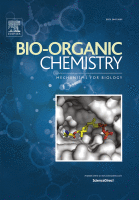
Experimental Study
Green tea polyphenolic compounds, (-)-epigallocatechin (EGC) and (-)-epicatechin-3-gallate (ECG), can diminish harmful Alzheimer's disease linked Aβ aggregates and ameliorate symptoms.
Chen T, Yang Y, Zhu S, Lu Y, Zhu L, Wang Y, Wang X

Randomised Controlled Trial
Daily supplementation of Matcha Green Tea Powder is found to enhance cognitive functions in elderly women.
Sakurai K, Shen C, Ezaki Y, Inamura N, Fukushima Y, Masuoka N, Hisatsune T
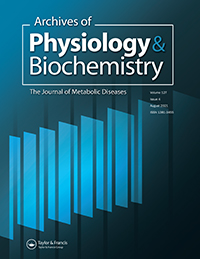
Systematic Review
Green tea supplementation raises adiponectin levels in patients with type 2 diabetes mellitus.
Asbaghi O, Fouladvand F, Ashtary-Larky D, Bagheri R, Choghakhori R, Wong A, Baker JS, Abbasnezhad A
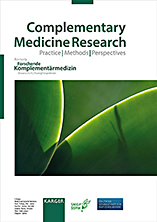
Systematic Review
Green tea consumption notably reduces body weight, body mass index, and body fat, especially in long-term use, at lower dosages, and among overweight individuals with type-2 diabetes.
Asbaghi O, Fouladvand F, Gonzalez MJ, Aghamohammadi V, Choghakhori R, Abbasnezhad A

Review Article
Catechins in green tea potentially counteract osteoporosis by negatively affecting bone loss processes and enhancing bone formation processes.
Huang HT, Cheng TL, Lin SY, Ho CJ, Chyu JY, Yang RS, Chen CH, Shen CL
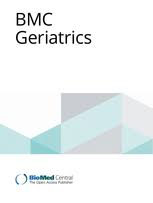
Cohort Study
Habitual and high-frequency tea consumption, particularly green tea, is associated with a reduced prevalence of cognitive impairment in middle-aged and older individuals.
Zhang J, Wang A, Zhang X, Chen S, Wu S, Zhao X, Zhang Q
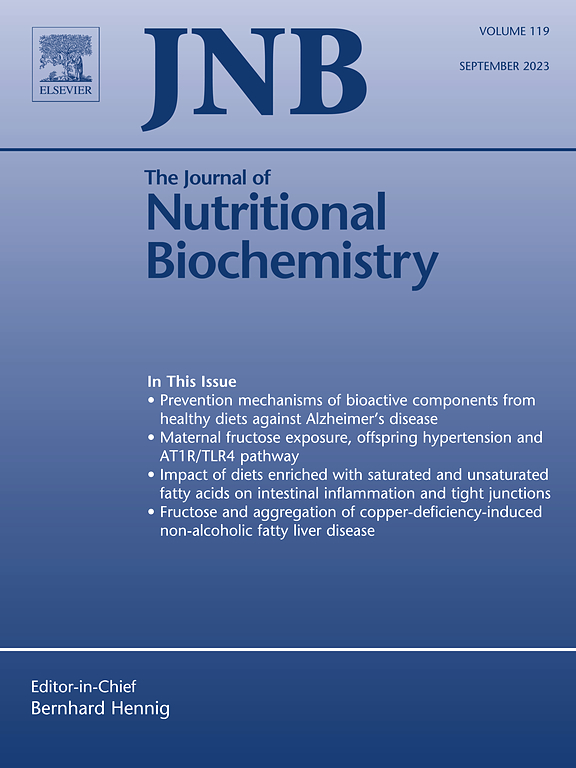
Review Article
Catechin-rich green tea extract (GTE) exercised anti-inflammatory activities can be beneficial in managing Nonalcoholic fatty liver disease (NAFLD) by reducing liver injury and gut-derived endotoxins.
Hodges JK, Sasaki GY, Bruno RS

Review Article
Green tea catechins potentially contribute to maintaining joint and skeletal muscle health, mitigating symptoms of osteoarthritis and sarcopenia.
Luk HY, Appell C, Chyu MC, Chen CH, Wang CY, Yang RS, Shen CL

Experimental Study
The major components of green tea and coffee, EGCG and CGA respectively, may have anti-cancer effects, though these effects seem to vary for different types of cancer.
Hayakawa S, Ohishi T, Miyoshi N, Oishi Y, Nakamura Y, Isemura M

Randomised Controlled Trial
Daily consumption of decaffeinated green tea catechins may enhance working memory.
Baba Y, Inagaki S, Nakagawa S, Kaneko T, Kobayashi M, Takihara T

Systematic Review
The consumption of green tea significantly lowers low-density lipoprotein cholesterol and total cholesterol, but it does not affect high-density lipoprotein cholesterol or triglycerides.
Xu R, Yang K, Li S, Dai M, Chen G
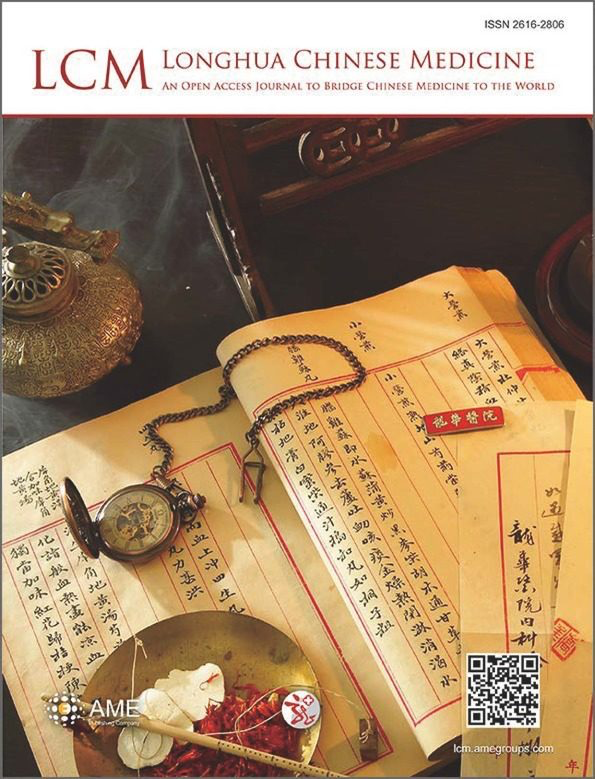
Review Article
Green tea and its compounds, especially catechins, may potentially prevent and treat osteoarthritis due to their potent antioxidant and anti-inflammatory properties.
Barbalho SM, Goulart RA, Buglio DS, Araujo AC, Guiguer EL

Review Article
Green tea polyphenols can potentially protect against neurodegenerative disorders like Parkinson's Disease through antioxidant, anti-inflammatory, and neuroprotective actions.
Malar DS, Prasanth MI, Brimson JM, Sharika R, Sivamaruthi BS, Chaiyasut C, Tencomnao T
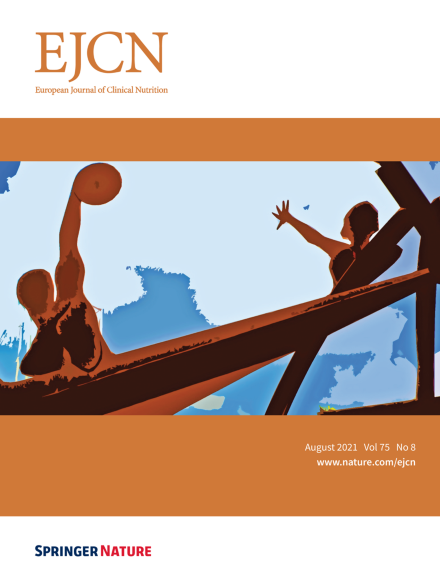
Systematic Review
The literature overall supports an inverse association between green tea and cardiovascular disease-related health outcomes, while the included meta-analyses generally suggested an inverse association between green tea and BMI-related and blood pressure outcomes.
Abe SK, Inoue M
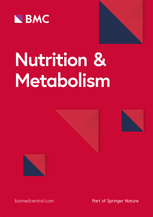
Systematic Review
Green tea supplementation significantly lowers fasting glucose levels but does not significantly affect fasting insulin and haemoglobin A1c values.
Xu R, Bai Y, Yang K, Chen G

Systematic Review
Green tea extract supplement intake reduces serum triglyceride and total cholesterol in patients with type 2 diabetes mellitus, especially when used long term.
Asbaghi O, Fouladvand F, Moradi S, Ashtary-Larky D, Choghakhori R, Abbasnezhad A

Systematic Review
Green tea catechins-containing mouthwash may potentially be a practical alternative to chlorhexidine due to its efficacy in plaque reduction and minimal side effects.
Gartenmann SJ, Steppacher SL, von Weydlich Y, Heumann C, Attin T, Schmidlin PR

Daily consumption of coffee and green tea is linked with decreased body mass index, body fat percentage, and cardiovascular risks in middle-aged Japanese women.
Yonekura Y, Terauchi M, Hirose A, Odai T, Kato K, Miyasaka N
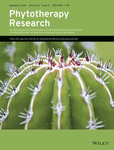
Systematic Review
Green tea intake can significantly reduce body weight, body mass index and waist circumference, with the greatest effect seen with lower dosages and shorter treatment durations.
Lin Y, Shi D, Su B, Wei J, Găman MA, Sedanur Macit M, Borges do Nascimento IJ, Guimaraes NS
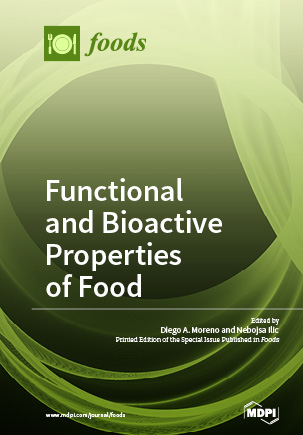
Network Pharmacology
The antioxidant potential and substance levels in Matcha tea is affected by the harvest period and water temperature used for preparation.
Jakubczyk K, Kochman J, Kwiatkowska A, Kałduńska J, Dec K, Kawczuga D, Janda K

Systematic Review
Green tea, containing antioxidative catechins, may possess some beneficial effects in reducing the risk of specific types of cancer.
Filippini T, Malavolti M, Borrelli F, Izzo AA, Fairweather-Tait SJ, Horneber M, Vinceti M

Systematic Review
Green tea influences liver enzymes differently based on an individual's health status, reducing levels in patients with Nonalcoholic Fatty Liver Disease, but slightly increasing levels in healthy subjects.
Mahmoodi M, Hosseini R, Kazemi A, Ofori‐Asenso R, Mazidi M, Mazloomi SM

Clinical Study
Green tea intake can significantly reduce both systolic and diastolic blood pressure.
Xu R, Yang K, Ding J, Chen G

Network Pharmacology
Raw pu-erh tea extract has superior antioxidant capacity due to higher polyphenol content, but ripe pu-erh offers a cheaper, yet effective alternative for antioxidant or antimicrobial properties.
Roda G, Marinello C, Grassi A, et al.
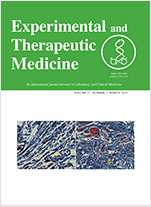
The polyphenol epigallocatechin-3-gallate (EGCG) inhibits the growth of cervical carcinoma cell lines potentially by altering the expression of micro-RNAs, indicating its potential as an anti-cervical cancer drug.
Zhu Y, Huang Y, Liu M, Yan Q, Zhao W, Yang P, Gao Q, Wei J, Zhao W, Ma L

Experimental Study
Matcha green tea potentially inhibits the growth of breast cancer cells by disrupting metabolic action within the cells and reprogramming their activities.
Bonuccelli G, Sotgia F, Lisanti MP
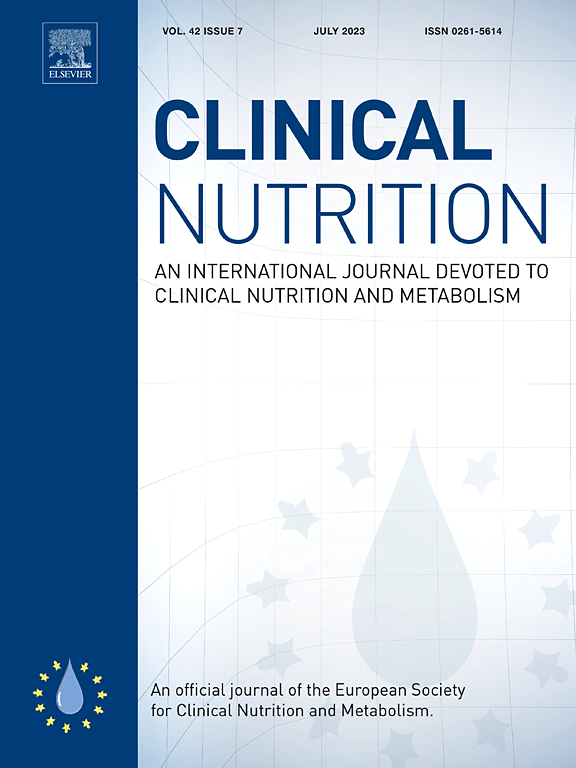
Randomised Controlled Trial
Green tea extract can potentially control pain and improve knee joint physical function in adults suffering from osteoarthritis.
Hashempur MH, Sadrneshin S, Mosavat SH, Ashraf A

Systematic Review
Among the health benefits of green tea are: anticarcinogenic, anti-inflammatory, antimicrobial, and antioxidant properties, and benefits in cardiovascular disease and oral health.
Wanda C. Reygaert
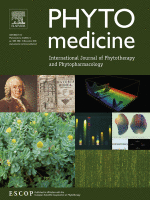
Systematic Review
Green tea consumption was shown to reduce psychopathological symptoms like anxiety and was also shown to effect cognition, with noted benefits for memory and attention. Green tea was also linked with the activation of working memory as seen in functional MRI.
Mancini E, Beglinger C, Drewe J, Zanchi D, Lang UE, Borgwardt S
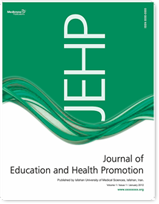
Randomised Controlled Trial
Green tea consumption leads to weight loss and decreased levels of fasting insulin and free testosterone in overweight women with polycystic ovarian syndrome.
Tehrani HG, Allahdadian M, Zarre F, Ranjbar H, Allahdadian F
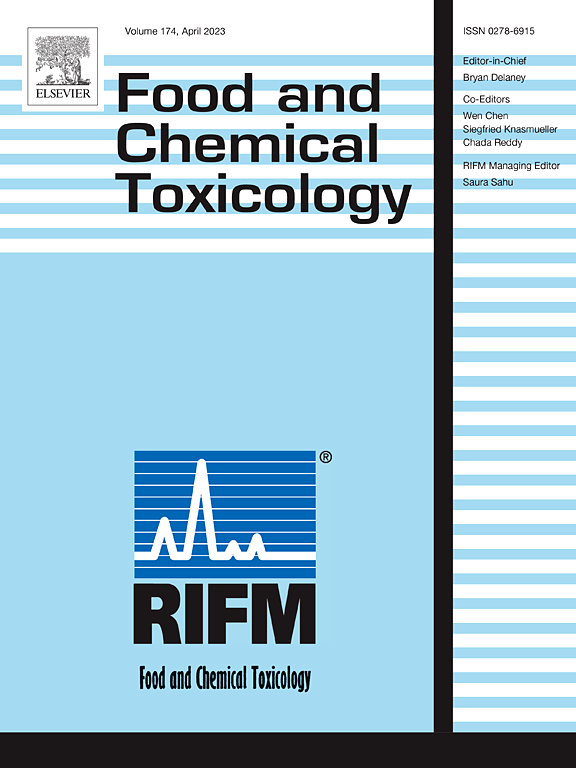
Randomised Controlled Trial
Green tea extract consumption can potentially cause mild adverse reactions, notably nausea, skin conditions, and increased alanine aminotransferase levels.
Dostal AM, Samavat H, Bedell S, Torkelson C, Wang R, Swenson K, Le C, Wu AH, Ursin G, Yuan JM, Kurzer MS
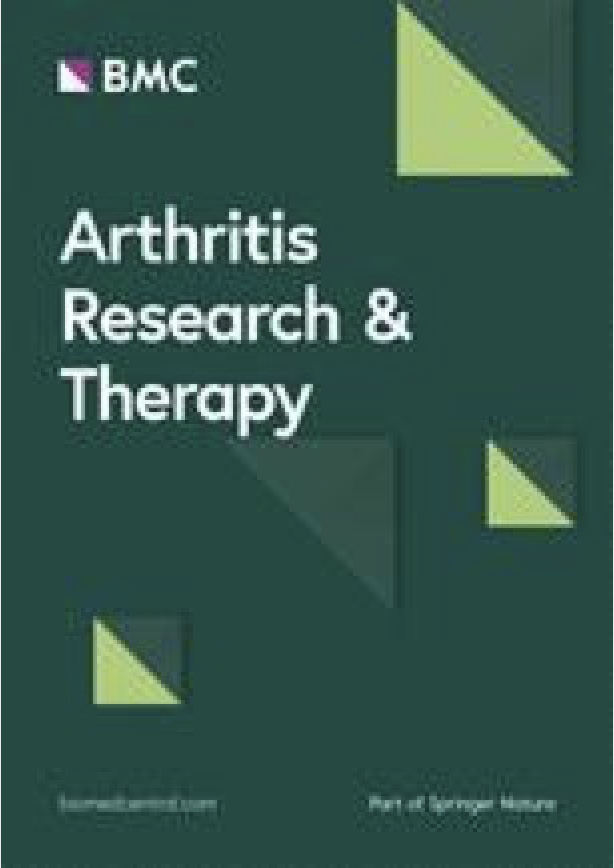
Experimental Study
Epigallocatechin 3-gallate (EGCG), found in green tea, can significantly slow down osteoarthritis progression and reduce associated pain in a post-traumatic osteoarthritis mouse model.
Leong DJ, Choudhury M, Hanstein R, Hirsh DM, Kim SJ, Majeska RJ, Schaffler MB, Hardin JA, Spray DC, Goldring MB, Cobelli NJ, Sun HB
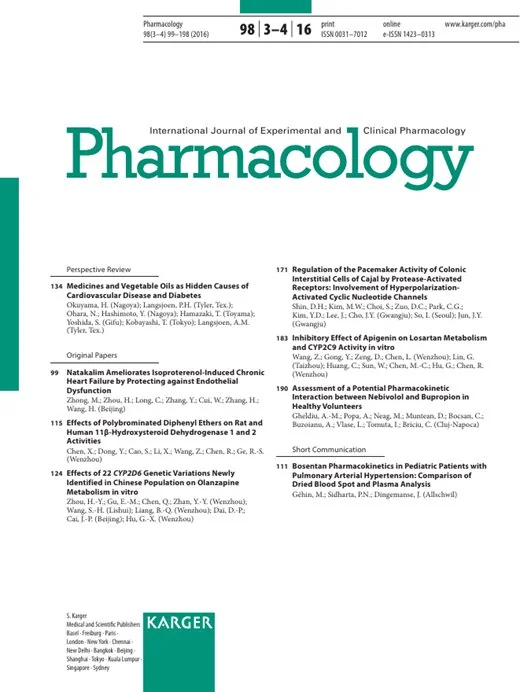
Systematic Review
Green tea polyphenols may enhance effectiveness of specific breast cancer endocrine treatments through both estrogen-dependent and -independent mechanisms.
Yiannakopoulou EC
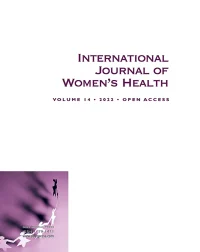
Randomised Controlled Trial
Green tea extract has shown promising results in reducing uterine fibroid volume, fibroid-related symptoms, and improving quality of life in women with symptomatic uterine fibroids.
Roshdy E, Rajaratnam V, Maitra S, Sabry M, Ait Allah AS, Al-Hendy A
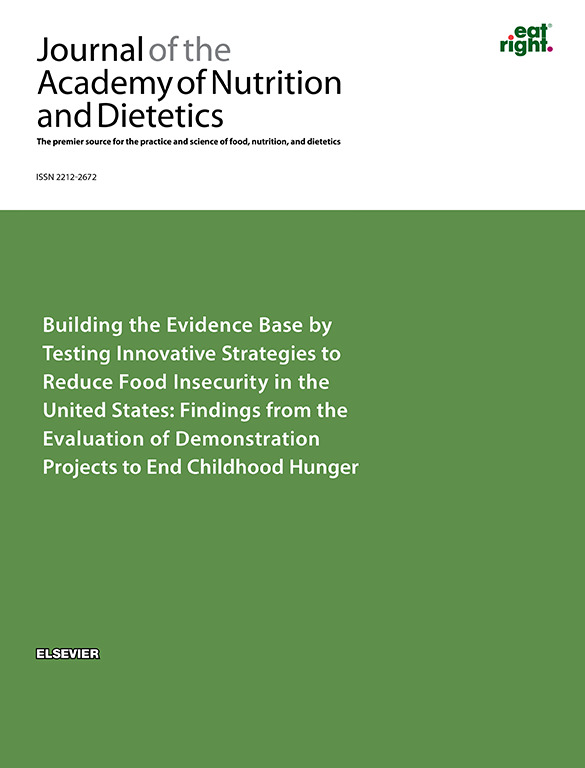
Systematic Review
The consumption of green tea catechins is associated with a statistically significant reduction in total and LDL cholesterol levels.
Kim A, Chiu A, Barone MK, Avino D, Wang F, Coleman CI, Phung OJ
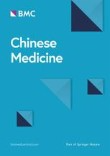
Systematic Review
Long-term consumption of tea catechins could be beneficial against high-fat diet-induced obesity and type II diabetes and could reduce the risk of coronary disease.
Chacko, S.M., Thambi, P.T., Kuttan, R. et al.
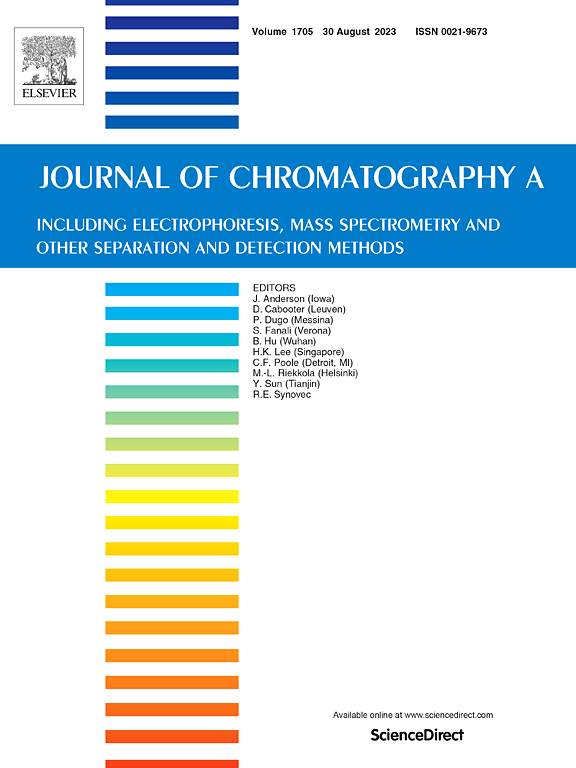
Experimental Study
Matcha tea holds nearly 137 times the concentration of epigallocatechin gallate, an important catechin, compared to common green teas.
Weiss DJ, Anderton CR
Executive Summary
Write an executive summary in the form of a blog article on the topic of "Research into Chinese medicine treatment for Green Tea" summarising the research below and using language that can be easily understood by patients and avoiding medical jargon using a professional and caring tone of voice.
Write an executive summary in the form of a blog article on the topic of "Researched Chinese medicine treatments for Green Tea" summarising the research below in an objective and easy to understand way, and using language that can be easily understood by patients. Group the article into Chinese medicine treatments first, followed by nutrition and other treatments. Avoid using medical jargon and use a professional and caring tone of voice.
Write me a concise but easy to understand executive summary on the topic of "Chinese medicine treatments for Green Tea" based on the following research that I will give you. Your summary should be 2 paragraphs long in Australian English spelling and include references to the studies.
A Cohort Study published in 2023 in the journal Nutrients found that Long-term consumption of green tea can potentially lessen the risk of depression in postmenopausal women by decreasing inflammation and boosting estradiol levels. In the study, researchers performed an analysis on a tea-producing village, incorporating 386 postmenopausal women in the investigation, who participated either as green tea consumers or non-drinkers (control group). The level of estradiol, inflammation markers, sleep quality, and depression symptoms were measured to uncover any correlations. The results reflected significant disparities between the tea-drinking and control groups in terms of depression and insomnia levels, BMI, inflammation levels, and estradiol quantities. By appraising these outcomes, it was found that green tea intake could quell the likelihood of depression via its impact on sleep, inflammation, and estradiol levels. The risk of depression was consequently seen as reduced among postmenopausal women engaging in regular consumption of green tea.
A Network Pharmacology published in 2023 in the journal F&S Science found that Combining Crila with green tea extract (EGCG) has been found to synergistically hinder the growth of human uterine fibroid cells. In the methodological process, human uterine leiomyoma (HuLM) cells were treated with varying concentrations of Crila, either alone or combined with epigallocatechin gallate (EGCG), employing various tests. Prominently, assays were performed to examine cell proliferation, with additional analyses conducted to measure protein and gene expressions of proliferation markers. The interaction of Crila and EGCG resulted in a notable reduction in HuLM cell viability, showing an increased inhibitory effect over singular treatments. This decrease in cell proliferation is attributed to a synergistic efficacy derived from using Crila and EGCG in combination. It was notably characterised by the reduced presence of the proliferation marker, proliferating cell nuclear antigen, both at the messenger RNA and protein levels. It was observed that the process does not induce cell apoptosis, implying that the cell viability reduction is primarily due to decreased cell proliferation.
A Case Report published in 2023 in the journal Journal of Personalized Medicine found that The combination of epigallocatechin gallate, vitamin B12, folic acid, and hyaluronic acid could effectively counter precancerous lesions of the uterine cervix caused by HPV infections. The methodology used in this research centred around treating a 39-year-old patient who had a history of HPV, cervix lesions, and multiple failed surgical attempts to treat the condition. The treatment plan applied was unique, utilizing a blend of epigallocatechin gallate, vitamin B12, folic acid, and hyaluronic acid, administered over an eight week period. The results showed promising effects, with the patient's histological and cytological analyses revealing only a chronic cervicitis instead of any malignant lesions or cellular dysplasia. Therefore, the necessity for invasive total hysterectomy was minimized, demonstrating the potential for the selected treatment plan to manage precancerous lesions of the uterine cervix.
A Review Article published in 2023 in the journal Nutrients found that Green tea helps alleviate symptoms in multiple benign gynecological disorders, primarily due to a compound called Epigallocatechin-3-gallate. The paper reviews the role of the compound Epigallocatechin-3-gallate found in green tea, and its effects on various benign gynecological conditions. The compound is noted for its antioxidant and prooxidant qualities, allowing it to interact with multiple cellular pathways that are crucial for disease pathogenesis. The studied conditions include uterine fibroids, endometriosis, dysmenorrhea, adenomyosis, menopause, and polycystic ovary syndrome. The research accounts for the specific mechanisms through which the compound might affect each condition, such as anti-fibrotic, anti-angiogenic, and pro-apoptotic mechanisms. The results suggest that green tea consumption can lead to improved symptom management in these disorders. It was found to lessen the intensity of symptoms associated with uterine fibroids and endometriosis, by invoking anti-fibrotic, anti-angiogenic, and pro-apoptotic mechanisms. It also helped manage pain linked with dysmenorrhea and adenomyosis through reducing uterine contractility and widely felt pain. Additionally, it showed efficacy in weight and osteoporosis control during menopause, and showed potential benefits in managing polycystic ovary syndrome. However, claims regarding its influence on fertility were deemed controversial.
A Randomised Controlled Trial published in 2023 in the journal Journal of Clinical Medicine found that A combination of epigallocatechin gallate, folic acid, vitamin B12, and hyaluronic acid may effectively clear HPV infections and cervical lesions in women. Forty women with persistent HPV infections and cervical lesions were enrolled in this study and were then divided into two groups. Women in the treatment group were given a 12-week treatment comprising of 200mg epigallocatechin gallate, 400µg folic acid, 1mg vitamin B12, and 50mg hyaluronic acid. In contrast, the control group received no treatment. A significant difference was noted between the two groups post-treatment. In the control group, the majority of women still had a Low-Grade Squamous Intraepithelial Lesion (LSIL) at the close of the study, with varying changes in viral DNA content. However, in the case of the treated group, most women had achieved full viral clearance, showing no signs of lesions post-treatment, thus highlighting the potential effectiveness of the treatment combination.
A Systematic Review published in 2023 in the journal Nutrition found that Our dose-response analysis indicated that moderate green tea consumption (500–1000 mL/d) was associated with a 21% to 24% lower risk of stroke. The meta-analysis aimed to clarify the inconsistent findings in epidemiologic studies regarding the link between green tea consumption and stroke risk. Five prospective cohort studies, involving 645,393 participants and 11,421 stroke cases, were analyzed. The summary relative risk (RR) revealed a substantial association, indicating a 26% reduction in stroke risk with the highest green tea consumption. The dose-response analysis indicated a nonlinear relationship, and compared with non-consumers, various levels of green tea intake showed progressively reduced RRs for stroke, emphasizing a potential protective effect. The findings from the meta-analysis strongly suggest an inverse association between green tea consumption and stroke risk. Notably, the highest green tea consumption demonstrated a significant 26% risk reduction. The dose-response analysis further highlighted a nonlinear relationship, with moderate consumption levels (500–1000 mL/d) showing the most substantial risk reduction. These results provide support for recommending green tea consumption as a measure for the primary prevention of stroke.
A Cohort Study published in 2023 in the journal Journal of the American Heart Association found that Heavy coffee consumption increases the risk of cardiovascular disease mortality in individuals with severe hypertension, while green tea consumption does not. With the use of the Japan Collaborative Cohort Study, researchers assessed 18,609 participants, both male and female, aged between 40 to 79 years. These participants had varying blood pressure levels, categorized into optimal and normal BP, high-normal BP, and two stages of hypertension. They completed a questionnaire about their lifestyle, diet, and medical history, and underwent health examinations, which were followed up until 2009. The association of coffee and green tea consumption on cardiovascular disease mortality was then calculated using a Cox proportional hazard model. It was found over an 18.9 year follow-up period that heavy coffee consumption was linked to increased risk of cardiovascular disease mortality among those suffering from the second to third grade of hypertension. In stark contrast, people with optimal and normal, high-normal blood pressure and first grade hypertension did not show such associations between coffee consumption and cardiovascular disease mortality. Interestingly, the risk of cardiovascular disease mortality was not found to be increased across any blood pressure categories in relation to green tea consumption.
A Cohort Study published in 2023 in the journal Nutrients found that Epigallocatechin gallate (EGCG), a green tea component, showed potential in treating uterine fibroids and associated infertility without causing liver toxicity or folate deficiency. The study involved the pre-testing of a green tea substance known as Epigallocatechin gallate (EGCG) on a cohort of premenopausal women, aged 18 to 40, with and without uterine fibroids, in order to evaluate its safety. The subjects were randomized into three groups, each receiving different treatments. One group took just a daily dose of 800 mg of EGCG, one group combined this EGCG dose with 100 mg of Clomiphene citrate for five days, and the third group combined it with 5 mg of Letrozole for the same period. The results showed that none of the subjects displayed signs of drug-induced liver injury, and all had normal serum folate levels. Hence, the findings suggest that the daily intake of 800mg of EGCG, whether consumed alone or in combination with Clomiphene citrate or Letrozole for five days, is well-tolerated and not related to any liver toxicity or folate deficiency in women of reproductive age.
A Review Article published in 2022 in the journal Molecules found that Green tea's catechins demonstrate therapeutic effects against neurodegenerative diseases via anti-inflammatory, antioxidant actions, and activating diverse brain cellular pathways. The research primarily evaluates the effect of polyphenolic compounds found in green tea, known as catechins, on neurodegenerative diseases. By conducting several interventional and observational studies on humans, the research explores the anti-cancer, anti-obesity, antidiabetic, anti-inflammatory, and neuroprotective properties of these compounds. The biological, pharmacological, antioxidant, and metal chelating abilities of catechins, particularly their influence on different cellular pathways within the brain, are intensively studied. The results elucidate that catechins exhibit multiple neuroprotective effects. Their anti-inflammatory and antioxidant properties help to inhibit excessive production of cytokines, and inflammatory pathways, while also controlling metal ions and free radicals. Researchers have further established that catechins may curb the phosphorylation of the tau protein and aggregation of amyloid beta, both key markers in neurodegenerative diseases. Additionally, these compounds show potential in reducing alpha-synuclein levels and augmenting dopamine levels. Hence, they significantly contribute to the prevention and treatment of neurodegenerative diseases, including Alzheimer's, Parkinson's, multiple sclerosis, and cognitive deficits.
A Review Article published in 2022 in the journal International Journal of Molecular Sciences found that Compounds found in green tea, especially EGCG, show significant anti-cancer activity and hold promise as potential anticancer drugs or adjuvants to standard chemotherapy. The study used a combination of epidemiological and laboratory studies to examine the effects of catechins in green tea on combating cancer. The researchers focused their attention on the four main catechin derivatives found in green tea: epicatechin, epigallocatechin, epicatechin gallate, and epigallocatechin gallate—the latter found to be most potent. Attention was given to the quantity of hydroxyl groups and the presence of certain structural groups in these compounds, and how these factors affected antioxidant activity. The study centered around the effects of catechins on tumor survival, proliferation, invasion, angiogenesis, and metastasis. By doing this, the researchers could observe the influence of the identified compounds on the various processes that lead to the development and spread of cancer. The main point of observation was the capacity of catechins to neutralize reactive oxygen species, a key facet in their anti-cancer activity.
A Meta-Analysis published in 2022 in the journal Nutrition Research found that Green tea supplementation can significantly reduce body weight in women with polycystic ovary syndrome, hence potentially beneficial in its clinical management. The research carried out was a systematic review of randomized controlled trials that focused on women with polycystic ovary syndrome, examining the effects of green tea supplementation versus a placebo. Relevant studies were sourced from electronic databases such as MEDLINE via PubMed, EMBASE via Elsevier, Cochrane Library, LILACS via BVS, and Web of Science using specific terms related to the illness and green tea. Criteria for the evaluation included effects on body weight, fasting insulin, body mass index, body fat percentage, daily caloric intake, waist and hip circumference, and the waist/hip ratio. Among the studies considered, there were a total of 169 women, with 85 allocated to the green tea group and 84 to the placebo group. It became apparent that there was a significant reduction in body weight for the group that received green tea supplementation. This leans towards the potential of green tea to be beneficial in the management of this syndrome.
A Systematic Review published in 2022 in the journal Food Science and Human Wellness found that Bioactive components in green tea have demonstrated potential neuroprotective effects and might play a role in preventing Alzheimer’s disease. In this study, the researchers focused on the potential preventative effects of bioactive compounds, specifically (-)-epigallocatechin-3-gallate, present in tea, on Alzheimer's disease (AD). This interest was based on recognition of the importance of lifestyle-related factors, including diet, in the primary prevention of AD. They compiled and analyzed the findings from various preclinical studies which pointed towards the neuroprotective qualities of these compounds. The results reveal an association between the consumption of green tea and a reduction in the risk of age-related cognitive decline and AD. However, these results do not establish a causal relationship. That is, while people who drink green tea appear to have lower rates of AD, the study cannot confirm that green tea consumption is the reason for this reduced prevalence. The researchers also emphasized that while the preventative effects of green tea were deduced from preclinical (animal) studies, human-based clinical trials yielded unsatisfactory evidence regarding tea's preventive or therapeutic effect on AD.
A Systematic Review published in 2022 in the journal Acta Neurologica Belgica found that Higher daily tea consumption, especially green tea, is linked to a lower risk of cerebral hemorrhage in adults. This meta-analysis uncovered evidence of a connection between tea consumption and cerebral hemorrhage risk, exploring databases including Web of Science, PubMed, Embase, and Scopus until December 2021. The synthesis utilized relative risks or odds ratios from observational studies. The pool of data included ten studies involving over 721,827 participants. The evaluation revealed that a higher rate of tea consumption, and more specifically green tea, was significantly related to a lower risk of cerebral hemorrhage. Interestingly, this connection could be observed even when adjusted for key lifestyle factors such as alcohol consumption, fruit and vegetable intake, and physical activity. It is worth noting that the intake of tea on a daily basis demonstrated a protective effect against the risk of cerebral hemorrhage.
A Randomised Controlled Trial published in 2022 in the journal International Journal of Health Sciences found that Green tea extract, specifically epigallocatechin gallate, can inhibit tumor growth and enhance the quality of life in women suffering from uterine fibroids. A total of 75 reproductive-age women with symptomatic uterine fibroids were included in a prospective, randomized control trial. The selection of participants for either group, those receiving 900 mg of green tea extract or those receiving symptomatic treatment, was done via a random, blind method using sealed envelopes. This trial took place over a span of 4 months and the overall study lasted around 3 years. The results of the study showcased the potency of green tea extract, particularly EGCG, with special regard to its anticancer properties. These manifested as anti-inflammatory, antiproliferative, and antioxidant effects. It was found that the administration of EGCG managed to influence tumor growth pathways, indicating its efficacy in dealing with uterine fibroids. Moreover, another significant progression was observed in the quality of life for the women partaking in this trial. It was confirmed that the use of EGCG could bring about an overall improvement in the living conditions of these women, contributing towards a better, healthier life amidst the struggle with their condition.
A Meta-Analysis published in 2021 in the journal Frontiers in Endocrinology found that Tea supplements, especially green tea, significantly decrease fasting blood glucose and fasting insulin levels and reduce body weight in women with polycystic ovary syndrome. The researchers conducted a systematic review and meta-analysis by searching published literature in different databases from 1985 to September 2021. The data from randomized controlled trials were extracted to assess the effectiveness of tea versus placebo in women with polycystic ovary syndrome. Weighted mean differences were pooled using a random-effects model. A total of six trials with 235 participants were included in this review. The study resulted in finding that consumption of tea supplements improved body weight, fasting blood glucose, and fasting insulin more significantly when compared with a placebo. Notably, green tea was effective on body weight, fasting insulin, fasting blood glucose, and certain reproductive hormone indexes. The therapy was also found to be safely tolerated by the patients. It's important to note that tea had significant effects on fasting blood glucose and hormone levels in trials with intervention duration of 3 months or more. Differences were noticed among Asian and Caucasian PCOS patients regarding the effect of tea on weight and fasting insulin.
A Systematic Review published in 2021 in the journal Japanese Dental Science Review found that Green tea treatment has shown potential in improving oral hygiene and gingival health, and reducing periodontitis and caries. The methodology of this research consisted of systematic literature review focusing on clinical trials that evaluated the impact of green tea on managing periodontitis and caries. Various databases including MedLine (PubMed), Scopus, and the Cochrane Library were utilized for gathering relevant studies. Eighteen suitable studies were selected, encompassing 870 subjects. The results reveal a noticeable positive effect from green tea treatment. This effect was realized in the reduction of gingival index, plaque index, gingival bleeding index and bleeding on probing when compared to a control group. It was also noted that when considered among chlorhexidine control groups, green tea showed a slight negative effect. There was additionally a significant positive effect seen in the reduction of clinical attachment level and probing pocket depth with green tea treatment.
A Systematic Review published in 2021 in the journal Antioxidants found that Green tea supplementation improves total antioxidant capacity and impacts oxidative stress based on dose levels in adults. The research's methodology involved a systematic search of research materials published in English language up to 21 August 2021. Recognized online databases such as Scopus, PubMed, Embase, and ISI Web of Science were utilized with the appropriate keywords. The study focused on randomized controlled trials that evaluated green tea supplementation, and its relationship with malondialdehyde and total antioxidant capacity in adults. A random-effects model quantified the difference, and the researchers carried out meta-regression and non-linear dose-response analyses to investigate the association between the quantity of green tea consumed and the duration of the intervention. The research analysed the results obtained from sixteen randomized controlled trials, which amount to seventeen study arms comprising a total of 760 participants. The study found that green tea supplementation did have significant effects on total antioxidant capacity, and these effects were chiefly linked to gender and body mass index. However, the results showed that these effects were not significant in cases of low-dose supplementation and obese individuals. On the other hand, no relationship was found between malondialdehyde and green tea supplementation in any subgroup. Nonetheless, meta-regression analyses indicated an inverse linear connection between the change in MDA and the dosage of green tea.
A Clinical Study published in 2021 in the journal Gynecological Endocrinology found that Simultaneous administration of vitamin D and Epigallocatechin gallate significantly reduces the size of uterine fibroids in premenopausal women, and decreases menstrual flow duration. In this study, 16 premenopausal women with uterine fibroids of varying sizes aged over 40 years old were given doses of Epigallocatechin gallate, Vitamin B6 and Vitamin D daily for 90 days. The women were selected based on specific criteria including their fibroid size and lack of other causes for abnormal uterine bleeding. Each woman kept a detailed daily diary recording details about their bleeding and pelvic pain. The analysis of the data revealed that there was a noteworthy decrease in both the average size of fibroids for each woman and the size of individual fibroids. This effect was especially pronounced in women with predominantly intramural fibroids in comparison to subserosal fibroids. While menstrual cycle duration and intensity did not change, the length of menstrual flow was decreased. Uterine and ovarian volume as well as endometrial thickness did not exhibit any significant changes. The treatment was generally highly satisfactory to the participants, with no adverse effects reported.
A Review Article published in 2021 in the journal Critical Reviews in Food Science and Nutrition found that Green tea and its component EGCG, demonstrate potential as a treatment for endometriosis by inhibiting growth, invasion, adhesion and angiogenesis. The main research methodology of this work is a narrative review. The paper comprehensively collects and reviews various preclinical studies that propose the use of green tea as a potential treatment for endometriosis. These studies explore the diverse biological properties and activities of green tea and its major bioactive component, (-)-epigallocatechin gallate, including anti-angiogenic, anti-proliferation, anti-metastasis, and apoptosis induction functions. Different potential mechanisms used by green tea to inhibit the growth of endometriosis are considered, such as its effects on inflammation, oxidative stress, invasion, adhesion, and apoptosis. The discussion of the reviewed data highlights the potential therapeutic effects of green tea acting on different molecular and cellular mechanisms in endometriosis. The researchers keenly discussed how green tea exhibited an inhibitory effect on the disease through multiple avenues, including reducing inflammation and oxidative stress, preventing tumor invasion and adhesion, promoting apoptosis (cell death), and limiting angiogenesis (the development of new blood vessels) - all these factors contribute to the growth and progression of endometriosis. The discussion elaborates on the significant roles and wider implications of these processes in understanding and potentially treating endometriosis.
A Clinical Study published in 2021 in the journal Scientific Reports found that Consumption of green tea enriched with a citrus polyphenol, α-glucosyl hesperidin, can prevent weight gain and reduce body mass index, especially in individuals under 50 years. The research involved a randomized, placebo-controlled, double-blinded, and parallel-group-designed clinical trial. Sixty healthy Japanese men and women aged between 30 and 75 were included in the study. They were instructed to consume a blend of green tea and α-glucosyl hesperidin (GT-gH). Each dosage contained 178 mg α-glucosyl hesperidin and 146 mg of an active ingredient of green tea, called EGCG. This protocol was followed for 12 weeks. Participants underwent physical, hematological, blood biochemical, and urine examinations to ensure safety. Discussion of findings showed that the GT-gH mixture played a significant role in weight management. By the end of 12 weeks, participants who consumed the GT-gH mix showed prevention in weight gain and a reduction in body mass index when compared to the control group. The anti-obesity effect was particularly observable in individuals aged below 50. These participants experienced lower levels of triglyceride, body fat percentage, and visceral fat levels, alongside a decrease in body weight, BMI, and blood LDL/HDL ratios.
A Systematic Review published in 2021 in the journal Reproductive Biology and Endocrinology found that Green tea extract could be considered a potential agent to attenuate PCOS complications mainly due to its effect on weight loss and glycemic levels. Current evidence indicates that green tea extract (GTE) supplementation has potential beneficial effects on PCOS. Of 314 articles found in the search, four human studies and four animal studies were included. All studies in humans showed the effects of GTE on weight loss. GTE's effect on decreasing testosterone levels in humans and LH levels in animals were also reported. In addition, increases in FSH and progesterone levels in animal models were observed. Although GTE improved fasting blood sugar and insulin levels, the effect of GTE on inflammatory parameters, such as TNF-alpha and IL-6 and antioxidant status, was limited to animal studies.
A Systematic Review published in 2021 in the journal Molecules found that Green tea consumption has been found to be effective in preventing the contraction of influenza infections. To identify the potential benefits of green tea in influenza prevention, a methodical review and combined analysis of eight distinct research studies involving 5,048 participants was completed. The effect of green tea catechin treatment was tested against control conditions and assessed based on infection rates. Five of these studies were randomized controlled trials involving 884 participants and three were cohort studies with 2,223 participants. Subgroups such as those who gargled or took orally ingested forms of green tea were also analyzed separately. Further to this, the possibility of publication biases was evaluated using Begg's and Egger's tests. The results showed both the randomized trials and the cohort studies displayed significant preventative effects on influenza infection for those treated with green tea catechins. Notably, there was no evidence of non-uniformity within the data, reinforcing these findings. The pooled results of different consumption methods further supported these findings, showing no disparities among the subgroups. These results suggest the consumption of green tea has tangible prophylactic effects against influenza infection.
A Clinical Study published in 2021 in the journal Journal of Herbal Medicine found that Green tea therapy can significantly improve rheumatoid arthritis symptoms, correlating with changes in specific circulating serum molecules, miR-125b and miR-146a. In this study, 100 female patients suffering from rheumatoid arthritis and 50 healthy female subjects were examined. Patients with rheumatoid arthritis underwent green tea therapy, where they consumed 5 cups of green tea daily, delivering a total of 1230 mg of catechins, over a span of 24 weeks. During this time, researchers used real-time PCR analysis to measure the levels of miR-146a and miR-125 b in the patients' peripheral blood mononuclear cells. These cells were isolated from the subjects at three distinct stages: the starting point (baseline), after 12 weeks, and finally after 24 weeks of the treatment. The observations revealed a notable increase in the level of circulating miR-125 b and decrease in miR-146 expression, and these shifts were seen to correspond positively with measures of disease activity and pain intensity in the patients after 24 weeks of the green tea therapy. Also of note was that the levels of miR-146a and miR-125b could accurately predict the clinical response to green tea therapy in 65% of the rheumatoid arthritis patients. Discrepancies in miR-146a and miR-125b levels following green tea therapy suggests that they may be attributed to the joint protective, antioxidant, and anti-inflammatory effects of green tea. It was therefore proposed that both miR-146a and miR-125b could potentially serve as diagnostic, therapeutic, and predictive biomarkers in green tea therapy and may even have valuable application in related non-drug rheumatoid arthritis therapy.
A Review Article published in 2021 in the journal Applied Sciences found that There is a notable gap in scientific research on the potential health benefits and antioxidant activity of matcha tea compared to green tea. The strategy used in this study was a literature review that critically evaluated existing research publications on both green tea and matcha tea. This focused primarily on the concentration and potential benefits of their bioactive components and polyphenols. Key areas of comparison included antioxidant activity and potential health benefits in each tea variety. The comparison was made simultaneously considering the scarcity of studies specifically focused on matcha tea. The discussion of the results became apparent that there is a significant discrepancy in the volume of scientific literature available on green tea compared to that on matcha. Despite matcha tea being rich in bioactive components and polyphenols, the lack of research has left its potential health benefits and antioxidant activity largely unexplored. This discrepancy emphasizes the immediate need to address the gap between public usage and awareness of matcha tea's benefits with scientific approval and understanding.
A Review Article published in 2021 in the journal Molecules found that Green tea and its chief bioactive component have the potential to improve certain female reproductive disorders such as endometriosis, polycystic ovary syndrome, and dysmenorrhea. The study reviews the beneficial effects of green tea and its major bioactive component on female reproductive disorders, focusing on endometriosis, polycystic ovary syndrome (PCOS), and dysmenorrhea. The research highlights the role of catechins, phenolic compounds found in tea, which have been known for their health benefits due to their high antioxidative properties. The green tea or its derivative works on endometriosis through anti-angiogenic, anti-fibrotic, anti-proliferative, and proapoptotic mechanisms. In the discussion of results, it was found that green tea not only enhances ovulation and reduces cyst formation in PCOS, but it also ameliorates generalised hyperalgesia, reduces plasma corticosterone levels, and mitigates uterine contractility in dysmenorrhea. Despite the promising findings, the study acknowledges the need for more comprehensive clinical trials to fully translate these findings into clinical practice.
A Systematic Review published in 2021 in the journal Nutrition, Metabolism and Cardiovascular Diseases found that Consumption of certain foods like rapeseed/canola oil, avocados, and turmeric can lead to moderate to large reductions in LDL cholesterol levels. The research was carried out by conducting a systematic evaluation of existing guidelines, systematic reviews, and Randomised Control Trials (RCTs); we have only referred to the latter for studies on coffee intake. This was done on databases such as PubMed, Cochrane Database of Systematic Reviews, and Cochrane Central Register of Controlled Trials, alongside a search on the Trip database for guidelines. The time frame for the study was from its inception up until June 2019 and October 2019 respectively. Studies were included if they were at least 13 days in duration and were in English. Using the Grading of Recommendations Assessment, Development, and Evaluation (GRADE) method, 37 guidelines, 108 systematic reviews, and 20 RCTs were evaluated to analyze the strength of evidence in the context of food impacts on LDL cholesterol levels. The results of the research reveal that foods high in unsaturated and low in saturated and trans fatty acids such as rapeseed or canola oil, those with added plant sterols/stanols, and those high in soluble fibre like oats, barley and psyllium cause moderate reductions in LDL cholesterol. A moderate to a large increase was observed with unfiltered coffee though. Soy protein, tomatoes, flaxseeds, and almonds cause small reductions. Meanwhile, foods like avocados and turmeric cause moderate to large reductions with a moderate level of evidence supporting this observation. Other foods like pulses, hazelnuts, walnuts, high-fiber/wholegrain foods, green tea result in small to moderate reductions, and sugar causes a small increase. Several foods identified were either neutral or had low or very low evidence regarding their effects on LDL cholesterol levels.
A Review Article published in 2021 in the journal Molecules found that Green tea, coffee, wine, and curry have beneficial health effects due to the polyphenols they contain, which possess both antioxidant and pro-oxidant properties. The research leverages epidemiological studies, clinical trials, cell-based studies and animal tests to examine the effects of green tea, coffee, wine, and curry -- and their key polyphenols -- on human health. The polyphenols investigated include epigallocatechin gallate in green tea, chlorogenic acid in coffee, resveratrol in wine, and curcumin in curry. The study concentrates on the workings of these polyphenols, primarily focusing on reactive oxygen species (ROS), and how they perform both anti- and pro-oxidant functions, fundamentally influencing different enzymes and factors with health contributions. In the discussion of the results, it is mentioned that the anti-oxidative actions of these polyphenols assist in the scavenging of ROS and the downregulation of the nuclear factor-κB, yielding beneficial anti-inflammatory effects. Conversely, their pro-oxidant actions appear to elevate ROS production, encouraging the activation of 5'-AMP-activated protein kinase that regulates different enzymes and factors for health improvement. However, the exact mechanism of how these polyphenols exhibit either pro- or anti-oxidant effects remains unclear. Also, the research underscores that while many studies note their health benefits, some others show no positive effects on health conditions such as obesity, suggesting that outcomes could be influenced by various study factors.
A Systematic Review published in 2021 in the journal Diabetes & Metabolic Syndrome: Clinical Research & Reviews found that The supplementary intake of green tea does not significantly affect blood glucose, fasting insulin, hemoglobin A1c, and insulin resistance in patients with type 2 diabetes mellitus. To examine the impact of green tea consumption on type 2 diabetes mellitus patients, a comprehensive search for relevant randomized controlled trials was conducted across multiple databases, including Web of Science, PubMed, and Scopus, without any language or time restrictions until June 2019. Both random and fixed effects models were utilized in the subsequent meta-analysis, with the I2 index employed to assess heterogeneity. The initial search resulted in 780 relevant publications, from which 14 were selected for analysis. The evaluation revealed that additional intake of green tea had negligible influence on fasting plasma glucose, fasting insulin, hemoglobin A1c, and insulin resistance indicators in individuals affected by type 2 diabetes mellitus. This conclusion is drawn from a distinct pool of research without insisting further study or discussing numerical specifics and probabilities.
A Review Article published in 2020 in the journal Molecules found that Shaded gardening of Japanese matcha creates high-quality tea with unique compounds that can boost physical and mental health. This study reviewed and compiled health benefits of matcha tea, a type of powdered green tea grown traditionally in Japan with plants shaded during growth. This shading process promotes the synthesis and accumulation of unique biologically active compounds, which includes theanine, caffeine, chlorophyll, and a variety of catechins, with matcha offering a condensed source of these elements. The review indicated that matcha is considered the highest quality tea due to its distinctive chemical composition and prized flavor. In discussing the results, a major conclusion reached was that matcha tea has effective health-promoting attributes due to the tea's high content of antioxidant and anti-inflammatory substances. Such benefits have largely been credited to its significant proportion of catechins - a type of phenolic compound beneficial to human health. The high antioxidant potential of the tea and its subsequent ability to help prevent various diseases and support cognitive function underscores the value in regular consumption of matcha for not only physical health, but also mental health.
A Experimental Study published in 2020 in the journal Bioorganic Chemistry found that Green tea polyphenolic compounds, (-)-epigallocatechin (EGC) and (-)-epicatechin-3-gallate (ECG), can diminish harmful Alzheimer's disease linked Aβ aggregates and ameliorate symptoms. Green tea compounds EGC and ECG were tested for their effects on Cu/Zn-induced or self-assembled Aβ aggregation involved in Alzheimer's disease. To do so, a combination of thioflavine T fluorescent spectrometry, inductively coupled plasma mass spectrometry, UV-Vis spectroscopy, transmission electron microscopy, silver staining, immunohistochemistry, and immunofluorescence assays were utilized. Findings indicate that these compounds bind mildly to Cu and Zn and reduce their caused or self-assembled Aβ aggregates. Moreover, these compounds were shown to manage neurotoxicity in mouse neuroblastoma Neuro-2a cells by decreasing the production of reactive oxygen species (ROS). From the findings, the EGC and ECG in green tea showed potential in reducing the toxicity of Aβ oligomers and fibrils which are heavily linked to Alzheimer's disease. Notably, ECG has the ability to traverse the blood-brain barrier and reduce Aβ plaques within the mouse brain, showcasing its potential for neuron protection. This study highlights the potential of green tea - specifically, its polyphenolic compounds - in the prevention or reduction of Alzheimer's disease symptoms.
A Randomised Controlled Trial published in 2020 in the journal Nutrients found that Daily supplementation of Matcha Green Tea Powder is found to enhance cognitive functions in elderly women. The research performed a randomized, double-blind, placebo-controlled trial over a period of 12 weeks. The involvement of 61 participants who were community-dwelling elderly people was arranged, and these participants were randomly assigned to either a test group receiving a daily drink containing 3 grams of Matcha Green Tea Powder or a placebo group. Assessments of their cognitive function changes were made using a psychometric test battery. Also, the participants' daily food intake was monitored and recorded using a Brief-type Self-administered Diet History Questionnaire. The results clearly indicated substantial enhancement in cognitive functions in women who were part of the active test group. It was observed in the Montreal Cognitive Assessment (MoCA) scoring scheme. An interesting pattern that came up in the dietary analysis was the significant inverse correlation between consumption of vitamin K in everyday food apart from test drinks and a change in MoCA. Overall, the study indicates that regular intake of Matcha Green Tea Powder can have protective effects against cognition decline, particularly in elderly women residing in the community.
A Systematic Review published in 2020 in the journal Archives of Physiology and Biochemistry found that Green tea supplementation raises adiponectin levels in patients with type 2 diabetes mellitus. For the methodology, an exhaustive search was undertaken in multiple databases including ISI Web of Science, PubMed, Embase, and Scopus to collect research articles pertaining to the effects of green tea supplementation on adiponectin levels in patients with type 2 diabetes up to June 2019. Both random and fixed effects models were employed in the meta-analyses as appropriate. The results of the data gathered from five trials incorporating 333 type 2 diabetic patients show that the implementation of green tea supplementation leads to a notable increase in adiponectin levels when compared to control groups. It showcases the potential role of green tea in managing diabetes through the modulation of adiponectin concentrations.
A Systematic Review published in 2020 in the journal Complementary Medicine Research found that Green tea consumption notably reduces body weight, body mass index, and body fat, especially in long-term use, at lower dosages, and among overweight individuals with type-2 diabetes. In this systematic review and meta-analysis, a comprehensive search was undertaken on Scopus, ISI Web of Science, and PubMed, for articles related to the topic, up until June 2019. To synthesize the data, a meta-analysis was conducted using the random effects model, and an index was employed to assess the levels of inconsistency in the findings. The assessment of this research involved evaluating eleven eligible articles. Analysis showed that green tea significantly lowered body weight, body mass index, and body fat. Notably, the advantageous effects of green tea were most observable in long-term interventions beyond eight weeks, at doses of green tea equal to or less than 800 mg per day, and among overweight patients. The study underscores the positive role of green tea consumption in improving body composition indicators among type-2 diabetes patients, given these specific conditions.
A Review Article published in 2020 in the journal Antioxidants found that Catechins in green tea potentially counteract osteoporosis by negatively affecting bone loss processes and enhancing bone formation processes. The research paper explores the role of catechins, a key compound found in green tea, in combating osteoporosis. In an endeavour to understand the cellular processes, the research focuses on the two critical processes involved in the onset of osteoporosis: osteoblastogenesis, the process of bone formation, and osteoclastogenesis, the process of bone resorption. Specifically, the research emphasizes that inflammation and high reactive oxygen levels enhance osteoclastogenesis while concurrently reducing osteoblastogenesis. Green tea catechins, which have strong antioxidant and anti-inflammatory properties, are assumed to rebalance these two processes. The discussions revolve around the potential of green tea catechins to curb osteoclastogenesis by increasing the rate of osteoclast apoptosis, hampering osteoclastogenesis, and impeding bone resorption in a controlled environment. This is achieved directly through interactions with pre-osteoclasts/osteoclasts or indirectly through regulation of pre-osteoclasts via mesenchymal stem cells (MSCs) or stromal cells. Furthermore, catechins are credited with boosting osteoblastogenesis by enhancing the osteogenic differentiation of MSCs and improving osteoblastic survival, proliferation, differentiation, and mineralization. The paper verifies the positive in-vitro effects of catechins on osteogenesis through various animal models and human observational studies.
A Cohort Study published in 2020 in the journal BMC Geriatrics found that Habitual and high-frequency tea consumption, particularly green tea, is associated with a reduced prevalence of cognitive impairment in middle-aged and older individuals. The methodology of the study drew upon data from the Asymptomatic Polyvascular Abnormalities in Community study involving individuals over 40. Through a standardized questionnaire, information regarding participants' tea consumption habits – including frequency and type of tea – was collected. Cognitive function was then evaluated utilizing two recognized tests: Mini-Mental State Examination (MMSE) and Montreal Cognitive Assessment (MoCA). Two distinct participant groups were chosen for these assessments: MMSE and MoCA subgroups. The researchers found, after accounting for potential confounding factors, that usual and high frequency tea intake correlated with a decreased risk of cognitive impairment. Further analysis showed that this risk reduction was notably high for green tea drinkers than for consumers of other tea types, as indicated by the MMSE test. A similar pattern was observed in the results of the MoCA group, showing a consistent association between regular tea intake, especially green, and lower prevalence of mental decline.
A Review Article published in 2020 in the journal The Journal of Nutritional Biochemistry found that Catechin-rich green tea extract (GTE) exercised anti-inflammatory activities can be beneficial in managing Nonalcoholic fatty liver disease (NAFLD) by reducing liver injury and gut-derived endotoxins. The research is built around the study of the anti-inflammatory properties of catechin-rich green tea extract (GTE). The primary analytical interest is its effects on inflammatory responses that contribute to Nonalcoholic fatty liver disease (NAFLD), specifically nonalcoholic steatohepatitis (NASH). The extraction focuses on inhibiting the activation of the hepatic nuclear factor kappa-B, which is known to exacerbate liver injury. The results have shown positive contributions of GTE to management of NAFLD. Itn was observed that the extract limits the activation of the hepatic nuclear factor kappa-B and in turn, reduces NASH-associated liver injury. Additionally, green tea extract was found to contain hepatic-level benefits that attenuate intracellular redox distress and pro-inflammatory signaling. It was also found to improve the gut barrier function, limit the translocation of gut-derived endotoxins, and exercise prebiotic and antimicrobial effects on the gut microbial ecosystem. These results can potentially contribute to managing NAFLD-associated morbidity.
A Review Article published in 2020 in the journal Antioxidants found that Green tea catechins potentially contribute to maintaining joint and skeletal muscle health, mitigating symptoms of osteoarthritis and sarcopenia. The research begins by providing an understanding of osteoarthritis, a degenerative inflammatory disorder of articular cartilage, and sarcopenia, a condition characterized by loss of muscle mass and strength. It explores their prevalence, causes such as excessive inflammation and oxidative stress, mitochondrial dysfunction, and diminished autophagy. It then delves into the role of green tea catechins in joint health, including their influence on inflammatory signaling agents, anabolic mediators, and miRNAs expression. This leads to a decrease in chondrocyte death and collagen degradation, thereby offering cartilage protection. The investigation also examines the effects of green tea catechins on skeletal muscle health. It highlights their role in maintaining an equilibrium between protein synthesis and degradation, and enhancing the synthesis of mitochondrial energy metabolism. The review thus suggests a positive impact of green tea catechins on joint and muscle health, helping to maintain favorable muscle homeostasis and reduce muscle atrophy associated with aging. It ends by pointing out the limitations of the current study and proposing future research directions.
A Experimental Study published in 2020 in the journal Molecules found that The major components of green tea and coffee, EGCG and CGA respectively, may have anti-cancer effects, though these effects seem to vary for different types of cancer. Studies were conducted across cell-based and animal trials to explore the health benefits, particularly in anticancer effects, of epigallocatechin gallate (known as EGCG) and chlorogenic acid (CGA), the predominant elements in green tea and coffee, respectively. It was observed that the results were inconsistent due to possible confounding factors. A conceivable mechanism suggested, a part of those shared between EGCG and CGA, was related to the alterations in reactive oxygen species. However, the variance in the anti-cancer effects may be attributed to the different target molecules of EGCG and CGA, signifying the site-specific differences of anti-cancer effects observed in human studies.
A Randomised Controlled Trial published in 2020 in the journal Molecules found that Daily consumption of decaffeinated green tea catechins may enhance working memory. The study incorporated a double-blind, randomized, controlled approach to determine the effects of 336.4 mg of decaffeinated green tea catechins on cognitive function. It targeted Japanese adults, aged 50 to 69 years, exhibiting a Mini-Mental State Examination Japanese version score of over 24 and who self-identified as having cognitive decline. The experiment comprised administering a substance and then examining the cognitive function post a single dosage as well as following 12 weeks of everyday consumption. The Cognitrax testing battery was utilized to assess cognitive function. In the results, it was observed that the incorrect response rate on the Continuous Performance Test significantly fell after a single dosage of green tea catechins. After 12 weeks of regular intake, the response duration for the two-back test in Part 4 of the 4-part Continuous Performance Test reduced, indicating potential improvement in working memory. The data suggests that consuming green tea catechins daily may potentially lead to cognitive enhancements, particularly in working memory.
A Systematic Review published in 2020 in the journal Nutrition Journal found that The consumption of green tea significantly lowers low-density lipoprotein cholesterol and total cholesterol, but it does not affect high-density lipoprotein cholesterol or triglycerides. To gather data for this study, a comprehensive literature review and meta-analysis were conducted using PubMed, Embase, and the Cochrane Library. The databases were searched from their inception to September 2019 for all studies related to the effect of green tea on blood lipids. Information from these studies, which included randomized and controlled trials, was used to estimate blood lipid changes resulting from green tea supplementation. The collected information underwent rigorous assessment for any potential bias. The analysis of data derived from 31 different trials involving a total of 3321 subjects showed that green tea intake has a significant effect in lowering low-density lipoprotein cholesterol and total cholesterol levels. However, consumption of green tea did not yield significant changes in the levels of high-density lipoprotein cholesterol or triglycerides. The results remained consistent across both normal-weight and overweight-obese subjects. No significant publication bias was detected from the collected studies, fortifying the reliability of the results.
A Review Article published in 2020 in the journal Longhua Chinese Medicine found that Green tea and its compounds, especially catechins, may potentially prevent and treat osteoarthritis due to their potent antioxidant and anti-inflammatory properties. The researchers performed an extensive review exploring the potential impact of green tea and its bioactive compounds, chiefly catechins, on osteoarthritis management. Their focus was on the anti-inflammatory and antioxidant abilities of these compounds. Based on the review, such compounds can quell inflammation by blocking various signaling pathways interconnected with inflammatory processes. Specifically, they have the potential to suppress the expression of several cytokines and enzymes related to inflammation. In addition, green tea was noted for its property to neutralize free radicals, thus averting the formation of harmful reactive oxygen species and countering oxidative stress. While many conventional, non-surgical osteoarthritis therapies can lead to numerous adverse effects, the current review suggests that green tea could serve as a safer alternative. It may be a promising direction in the prevention and management of this chronic, painful, and inflammatory condition, which touches a significant number of people globally.
A Review Article published in 2020 in the journal Molecules found that Green tea polyphenols can potentially protect against neurodegenerative disorders like Parkinson's Disease through antioxidant, anti-inflammatory, and neuroprotective actions. The study synthesized existing research on the potential neuroprotective benefits of green tea polyphenols, particularly in Parkinson's disease. The papers highlighted were drawn from numerous sources and focused on the antioxidant, anti-inflammatory, and neuroprotective attributes of these compounds. Green tea's potential protection against free radicals, inflammation, and neuro-damage were considerable points of interest. The analysis also took into account the complex physiological, social, and cultural factors that could influence the effectiveness of green tea polyphenols in human subjects. Through the evaluation of numerous in vivo studies, researchers came to intriguing conclusions about the overall mechanism of green tea. The studies assessed explored how green tea consumption could mitigate neurodegenerative disorders like Parkinson's. In these analyses, investigators refined their understanding of how green tea and its polyphenols function from a neuroprotective standpoint. This information helps us better understand the advantages of green tea consumption and its potential role in preventing neurodegeneration.
A Systematic Review published in 2020 in the journal European Journal of Clinical Nutrition found that The literature overall supports an inverse association between green tea and cardiovascular disease-related health outcomes, while the included meta-analyses generally suggested an inverse association between green tea and BMI-related and blood pressure outcomes. The evidence on green tea consumption and health outcomes presented in this review suggests green tea may be favorable for cardiovascular disease, particularly stroke, and certain cancers such as endometrial, esophageal, lung, non-Hodgkins lymphoma, oral, and ovarian cancer. More evidence is needed to assess the impact of green tea on breast, gastric, and liver cancer risk. Additional studies could also help clarify the suggested null association with certain cancer sites: colorectal, pancreatic, and prostate cancer. Possible minor adverse events on health from green tea consumption were reported in one study, however these must be interpreted cautiously within the study context and possible finer dose-response implications. The findings for green tea and diabetes risk were inconclusive. For BMI the current evidence suggests a possible weak association, while the evidence is stronger supporting a decrease in blood pressure from green tea. More studies investigating a possible association between green tea consumption and other health outcomes such as cognition, injuries, respiratory disease would be informative to more completely assess the impact of green tea on human health. In conclusion, our review suggests green tea may have health benefits especially for cardiovascular disease and certain cancer sites.
A Systematic Review published in 2020 in the journal Nutrition & Metabolism found that Green tea supplementation significantly lowers fasting glucose levels but does not significantly affect fasting insulin and haemoglobin A1c values. The researchers performed a systematic review and meta-analysis of randomized control trials which examined the effect of green tea on glycemic control. Using online databases like PubMed, Embase, and Cochrane Library, they identified relevant trials up until February 2020. They then employed a random-effects model in order to estimate the weighted mean difference. In the discussion of the results, it was found that twenty-seven trials, including 2194 subjects, were part of the meta-analysis. The collected data indicated that green tea lowered fasting blood glucose levels significantly. However, the same was not observed for fasting insulin and HbA1c values, which remained relatively unchanged despite green tea consumption. Moreover, substantial differences were noted in the range of responses, indicating significant heterogeneity, especially for fasting insulin levels. Despite these discrepancies, the short-term trials collectively demonstrated the beneficial effect of green tea supplementation in reducing fasting glucose levels.
A Systematic Review published in 2020 in the journal Diabetes & Metabolic Syndrome: Clinical Research & Reviews found that Green tea extract supplement intake reduces serum triglyceride and total cholesterol in patients with type 2 diabetes mellitus, especially when used long term. A comprehensive search through popular databases such as Web of Science, PubMed, and Scopus was conducted to find randomized controlled trials (RCTs) that investigated the effects of green tea extract on lipid profiles in adults with type 2 diabetes. Parameters of interest included concentrations of high- and low-density lipoprotein, triglyceride, and total cholesterol. A total of 780 studies were initially retrieved and, after applying specific criteria and eliminations, seven were ultimately considered. Through the studies, it was found that taking additional green tea extract improved lipid profiles by notably decreasing triglyceride levels in patients with type 2 diabetes. Further subgroup analysis, based on parameters such as the duration of interventions and dosage, showed that longer-term use of green tea extract and higher daily doses led to significant decreases in serum triglyceride concentrations. Noteworthy findings were observed where long-term interventions, combined with lower daily doses, resulted in considerable reductions in total cholesterol levels.
A Systematic Review published in 2020 in the journal Journal of Herbal Medicine found that Green tea catechins-containing mouthwash may potentially be a practical alternative to chlorhexidine due to its efficacy in plaque reduction and minimal side effects. The methodology involved an exhaustive literature review of several electronic databases, such as CINAHL, Cochrane Library, MEDLINE, PubMed and Scopus, up until January 2017. This review adhered to the PRISMA criteria, centring the research question around the impact of green tea catechins-containing mouthwash on plaque accumulation and gingival inflammation in patients with gingivitis. Out of the 187 titles identified this way, five were fit for meta-analysis, the subject matter primarily revolving around an Asian population. The results indicated that both green tea and chlorhexidine (CHX) significantly outperformed a placebo in reducing Plaque Index (PI), with no substantial contrast between the CHX and green tea groups, both in terms of the endpoint and the change from the beginning of the study to its conclusion. However, only minor side effects were associated with the green tea mouthwash. Contrarily to chlorhexidine, this aspect might make green tea mouthwash more suitable for prolonged use. Despite some heterogeneity in the data and potential bias risks, green tea mouthwash remains an interesting, viable alternative worth considering.
A published in 2020 in the journal Nutrients found that Daily consumption of coffee and green tea is linked with decreased body mass index, body fat percentage, and cardiovascular risks in middle-aged Japanese women. This cross-sectional study was conducted with 232 Japanese women aged 40-65 years who visited the menopause clinic of Tokyo Medical and Dental University Hospital from November 2007 to August 2017. The women's body composition and cardiovascular parameters were assessed using a body composition analyzer and vascular screening system. Furthermore, their coffee and green tea consumption frequency was gauged using a brief-type self-administered diet history questionnaire. The researchers then explored the associations between these variables using multivariate logistic regression. In terms of results, the study found a negative association between daily coffee consumption and both high body mass index and body fat percentage. Similarly, daily green tea consumption was inversely related to high body fat percentage. The combined daily consumption of coffee and green tea also showed inverse relationships with both body mass index and body fat percentage. Moreover, in pre- and perimenopausal women, daily consumption of both beverages was found to be negatively associated with cardio-ankle vascular index, a measure of cardiovascular risk.
A Systematic Review published in 2020 in the journal Phytotherapy Research found that Green tea intake can significantly reduce body weight, body mass index and waist circumference, with the greatest effect seen with lower dosages and shorter treatment durations. In the methodology used for this study, several databases were exhaustively searched from their inception to September 2019. The goal was to identify clinical trials that had explored the influence of green tea supplements on obesity indices in humans. The dosage, type of extract, and duration of the intervention were key factors for the study. The study design incorporated the use of a random-effects model to aggregate the collected data. In terms of the study's results, they demonstrated notable changes in subjects' obesity indices following the administration of green tea. A significant reduction in body weight and body mass index was observed, which was consistent across all extracted data. The most noticeable change was observed in the reduction of waist circumference in subjects who were administered an equivalent of 800 mg/day of green tea. Also, a more significant reduction in body weight occurred with a green tea dosage of less than 500 mg/day and a treatment duration of 12 weeks. These results affirm the potential use of green tea in improving obesity indices and the study advocates for the inclusion of green tea supplements, combined with a balanced diet and regular exercise, in obesity management strategies.
A Network Pharmacology published in 2020 in the journal Foods found that The antioxidant potential and substance levels in Matcha tea is affected by the harvest period and water temperature used for preparation. The study's methodology was set to evaluate the antioxidant capacity and significant component levels of traditional and daily Matcha green tea, originating from Japan. It focused on the content of essential vitamins, flavonoids, and other polyphenols. The variations in these components were examined by making infusions at different temperatures - 25°C, 70°C, 80°C, and 90°C. Approximately 1.75g of the plant material was used with 100mL of distilled water in these preparations. The comparison was made between Matcha tea from the first and second harvests, as well as from the second and third harvests. In the discussion of results, infusions made from the daily Matcha harvest, especially the one prepared at 90°C, were observed to have the highest amount of substances possessing antioxidant properties. Notably, the concentrations of these beneficial substances tended to vary according to the timing of the plant's harvest and the temperature of water used for infusion preparation. Particularly, flavonoids, polyphenols, and vitamin C showed appreciable fluctuation across these variables, confirming a vital link between preparation details and the health benefits furnished by Matcha green tea.
A Systematic Review published in 2020 in the journal Cochrane Database of Systematic Reviews found that Green tea, containing antioxidative catechins, may possess some beneficial effects in reducing the risk of specific types of cancer. The study team performed an extensive review of 142 completed and 2 ongoing studies up to January 2019. These studies encompassed all types of epidemiological studies: experimental (randomised controlled trials) and nonexperimental (observational studies with both cohort and case-control design) that looked into the association of green tea consumption with cancer risk or quality of life, or both. Data extraction and methodological quality assessment of these studies were performed independently by two or more review authors. These efforts were organized and the results summarized according to the type of cancer diagnosis. The data was sourced from CENTRAL, MEDLINE, Embase, ClinicalTrials.gov, and referenced lists of earlier reviews and included studies. The studies focused on investigating the links between cancer incidence and mortality rates, safety data, quality of life, and green tea consumption. Numerous studies came with a high degree of methodological quality, based on 'Risk of bias' assessment. The placebos in 11 studies involving a total of 1795 participants were green tea extracts. On another note, the studies indicated some side effects linked to high intakes of green tea with more than a million participants undertaking the non-experimental studies. Despite inconclusive evidence, experimental and nonexperimental epidemiological studies suggested potential beneficial effects of green tea consumption on the overall risk of cancer or on certain types of cancer. Variations of the beneficial effects of green tea were observable across different cancer types, indicating a decrease in rate ratios (RR) in the highest category of green tea consumption versus the lowest. A detailed analysis based on study design exhibited conflicting results for some types of cancers, showing an increased RR in cohort studies and a decreased or no difference in RR in case-control studies. However, the overall interpretability of these RR estimates was limited by methodological issues, such as low study numbers and inconsistencies with cohort study results. Lastly, it's important to note that the majority of included studies were conducted within populations with a high intake of green tea, mainly Asian, thus limiting the general applicability of the findings to other populations.
A Systematic Review published in 2020 in the journal Phytotherapy Research found that Green tea influences liver enzymes differently based on an individual's health status, reducing levels in patients with Nonalcoholic Fatty Liver Disease, but slightly increasing levels in healthy subjects. The researchers initiated a comprehensive review and analysis of randomized clinical trials relating to green tea supplementation's effects on liver enzymes. This analysis included forms of green tea supplementation, such as catechin. The information to support this examination was sourced from four medical and health databases and included all trials examining the influence of green tea or its derivatives on specific liver enzymes, including Alanine Transaminase, Aspartate Aminotransferase, Alkaline Phosphatase, and Bilirubin. Altogether, fifteen trials were considered for inclusion in this research. The study found that while the overall effect of green tea on liver enzymes was nonsignificant, further analysis showed that the impact of green tea on liver enzymes varies depending on an individual's health status. Notably, the use of green tea reduced liver enzyme levels in participants diagnosed with Nonalcoholic Fatty Liver Disease. However, in contrast, a small but statistically significant increase in liver enzyme levels was observed in healthy subjects. These findings suggest that the therapeutic potential of green tea may differ significantly based on an individual's health condition.
A Clinical Study published in 2020 in the journal Medicine found that Green tea intake can significantly reduce both systolic and diastolic blood pressure. In this meta-analysis, studies were sourced from the PubMed, Embase, and Cochrane Library databases from their inception to August 2019. The selection criteria focused on randomized placebo-controlled trials, exploring the effects of green tea on blood pressure control. The final selection consisted of twenty-four trials involving 1697 subjects, and the results were pooled using the generic inverse-variance method with random-effects weighting. The quality of the included studies was independently ascertained using the Jadad score, while potential publication bias was evaluated using funnel plots, and the Egger and Begg tests. The pooled results showed that green tea intake led to notable reductions in both systolic and diastolic blood pressure, though the outcomes revealed significant heterogeneity among the trials. The funnel plots and tests used to investigate the publication bias did not find any substantial evidence to suggest this was an influencing factor in the results.
A Network Pharmacology published in 2019 in the journal Molecules found that Raw pu-erh tea extract has superior antioxidant capacity due to higher polyphenol content, but ripe pu-erh offers a cheaper, yet effective alternative for antioxidant or antimicrobial properties. The investigation first utilised mass spectrometry and UV spectroscopy to profile and quantify the primary components of two types of fermented Chinese green tea - raw and ripe pu-erh. This took place after a procedure known as chromatographic separation, used to separate the components of the extract. Beyond this, the activities of the extracts, relating to antioxidant potential, antimicrobial capability and enzyme inhibition, were established and linked to their main components. In discussing the results, though having similar caffeine content and equivalent enzyme inhibition and antimicrobial activities, raw pu-erh extract demonstrated a stronger antioxidant ability owing to it containing a higher concentration of polyphenols. However, the benefits of raw pu-erh tea do not provide enough justification for its higher production costs in comparison to the ripe variety. The ripe variety of pu-erh tea was shown to be a cost-effective alternative for creating products with antioxidant or antimicrobial characteristics.
A published in 2018 in the journal Experimental and Therapeutic Medicine found that The polyphenol epigallocatechin-3-gallate (EGCG) inhibits the growth of cervical carcinoma cell lines potentially by altering the expression of micro-RNAs, indicating its potential as an anti-cervical cancer drug. In the methodology, an MTT assay was used to measure cell proliferation and examine the inhibitory effects of EGCG, a polyphenol, on the growth of cervical carcinoma for HeLa cells subjected to a range of EGCG concentrations. The study also assessed the associated regulation of various microRNA expression involving HeLa, SiHa, CaSki and C33A cell lines, using quantitative polymerase chain reaction (PCR) analyses. The results revealed that the growth of HeLa cells was significantly reduced by EGCG in a dose- and time-dependent manner. Further, the study found noteworthy changes in the expression of particular microRNAs in various cell lines due to EGCG treatment. It was observed that certain microRNAs were significantly downregulated while others were upregulated. Therefore, the study suggests that EGCG likely suppresses the growth of cervical carcinoma cells by potentially regulating the expression of micro-RNAs.
A Experimental Study published in 2018 in the journal Aging found that Matcha green tea potentially inhibits the growth of breast cancer cells by disrupting metabolic action within the cells and reprogramming their activities. The research utilized MCF7 cells, a human breast cancer cell line, as a standard model for testing. To understand the effects of Matcha green tea (MGT) at the cellular level, the team conducted two sets of detailed examinations, metabolic phenotyping and proteomics analysis. Metabolic phenotyping explored the effects of the MGT on cellular metabolism, looking at its influence on both oxidative mitochondrial metabolism and glycolytic flux. Proteomics analysis identified specific proteins and enzymes which were affected by the MGT treatment. The findings from the metabolic phenotyping displayed that MGT treatment slowed down both oxidative mitochondrial metabolism and glycolytic flux, pushing cancer cells towards a less active metabolic state. The proteomics analysis discovered specific mitochondrial proteins and glycolytic enzymes down-regulated by the introduction of MGT. Detailed bioinformatics analysis of the proteomics data revealed that the MGT drastically affected mTOR signalling, particularly down-regulating numerous components of the 40S ribosome, suggesting a possibility of MGT being used as an inhibitor of mTOR. Other pathways, including anti-oxidant response, cell cycle regulation, and interleukin signalling, were also significantly affected.
A Randomised Controlled Trial published in 2018 in the journal Clinical Nutrition found that Green tea extract can potentially control pain and improve knee joint physical function in adults suffering from osteoarthritis. The study employed a randomized open-label active-controlled clinical trial in which fifty adults with knee osteoarthritis were randomly divided into two groups. One group received the green tea extract in tablet form along with diclofenac tablet, referred to as the "intervention group," while the other, the "control group," received only the diclofenac tablet. This trial period lasted four weeks. The researchers evaluated the patients at the start of the trial and then four weeks later, measuring the pain score through a visual analogue scale and a specific osteoarthritis questionnaire's score, in addition to its three sub-scores. The participants were also asked to report any side effects experienced during the trial period. The outcomes of the experiment showed that when compared to the control group, the green tea group showed a significant decrease in their pain score and the score measuring knee joint function. However, no differences were observed between the two groups in terms of the specific osteoarthritis questionnaire's pain and stiffness scores. An adverse event of gastric upset was reported in only one patient from the control group.
A Systematic Review published in 2018 in the journal Beverages found that Among the health benefits of green tea are: anticarcinogenic, anti-inflammatory, antimicrobial, and antioxidant properties, and benefits in cardiovascular disease and oral health. Green tea catechins have proved to be very versatile in providing health benefits. This means that there are potential health benefits for everyone in the consumption of green tea. Even moderate amounts of consumption (drinking 1–2 cups of tea per day) may have benefits. It is a very good thing that it is the second most popular beverage worldwide, as the differences in health in a world without green tea might be significant. There is fortunately a wide variety of research being performed using green tea catechins, and we are starting to see many studies performed using human subjects, as it is extremely important that we are able to show the direct benefits to humans. The expansive repertoire of green tea activity in health is important, especially to those people who live where medical assistance is not generally available or affordable.
A Systematic Review published in 2017 in the journal Phytomedicine found that Green tea consumption was shown to reduce psychopathological symptoms like anxiety and was also shown to effect cognition, with noted benefits for memory and attention. Green tea was also linked with the activation of working memory as seen in functional MRI. The effects of green tea cannot be attributed to a single constituent of the beverage. This is exemplified in the finding that beneficial green tea effects on cognition are observed under the combined influence of both caffeine and l-theanine, whereas separate administration of either substance was found to have a lesser impact.
A Randomised Controlled Trial published in 2017 in the journal Journal of Education and Health Promotion found that Green tea consumption leads to weight loss and decreased levels of fasting insulin and free testosterone in overweight women with polycystic ovarian syndrome. In the research methodology, a two-group, double-blind, randomized clinical trial was conducted among 60 overweight women with polycystic ovarian syndrome in Isfahan. The participants were randomly classified into two groups, one receiving green tea (the experimental group) and the other receiving a placebo (the control group). Comparisons of levels of free testosterone hormones and fasting insulin were made at the start of the study and 12 weeks later, along with measurements of participant weight before and after the study. Discussing the results, the comparison showed no initial significant difference in participant weight, fasting insulin or free testosterone levels between the two groups. However, after the 12-week period, notable differences were observed. The green tea group showed significant weight loss and declines in both fasting insulin and free testosterone levels compared to the placebo group.
A Randomised Controlled Trial published in 2015 in the journal Food and Chemical Toxicology found that Green tea extract consumption can potentially cause mild adverse reactions, notably nausea, skin conditions, and increased alanine aminotransferase levels. In our study, we utilized a randomized, double-blind, and placebo-controlled method. We selected 1075 postmenopausal women to participate over the course of one year. They were randomly assigned to daily consumption of green tea extract containing a specified quantity of epigallocatechin gallate (EGCG) or a placebo. With regards to the results, there was no significant difference observed with general adverse events between those consuming the green tea extract and those taking the placebo. However, it was recognized that those women taking the green tea extract reported a higher incidence of nausea and skin conditions, but a lower occurrence of diarrhea. More women in the green tea extract group experienced an elevation in alanine aminotransferase levels. Overall, adverse events were mainly mild and transient, highlighting a general tolerance for daily consumption of GTE. Yet, it was noted that a small percentage of GTE consumers experienced elevated alanine aminotransferase levels, including a few serious cases.
A Experimental Study published in 2014 in the journal Arthritis Research & Therapy found that Epigallocatechin 3-gallate (EGCG), found in green tea, can significantly slow down osteoarthritis progression and reduce associated pain in a post-traumatic osteoarthritis mouse model. C57BL/6 mice were operated to destabilize the medial meniscus mimicking post-traumatic osteoarthritis or were subjected to a sham surgery as a control. From the day of the surgery, the mice were given daily injections of EGCG or a vehicle control for either four or eight weeks. The severity of osteoarthritis was evaluated by staining and scoring techniques, detection of type II collagen and aggrecan, as well as through the measurement of enzyme expression involved in cartilage degradation. After the surgery, at both four and eight weeks, the cartilage in EGCG-treated mice showcased lesser cartilage erosion and staining loss than the control mice. Furthermore, it also revealed lower osteoarthritis scores and reduced levels of enzymes implicated in cartilage degradation. The EGCG-treated mice exhibited elevated expression of genes that regulate these enzymes. Additionally, EGCG positively affected the cartilage's gene expression level for both pro and anti-inflammatory cytokines. EGCG treatment also resulted in a reduction of osteoarthritis-associated pain, reflected in higher locomotor behavior and a decrease in the expression of inflammatory cytokines and a chemokine receptor in the dorsal root ganglion.
A Systematic Review published in 2014 in the journal Pharmacology found that Green tea polyphenols may enhance effectiveness of specific breast cancer endocrine treatments through both estrogen-dependent and -independent mechanisms. The methodology used in this systematic review involved a comprehensive search for relevant studies across various electronic databases. The search terms used were tailored to uncover data specifically regarding the interaction of green tea catechins with breast cancer endocrine treatment. Importantly, this review was focused on experimental trials which studied the synergistic effects of green tea catechins and certain breast cancer treatments, namely tamoxifen and raloxifene. The analysis of results indicated that green tea catechins potentially work in conjunction with tamoxifen or raloxifene—used for treating both estrogen receptor-positive and receptor-negative breast cancer—via mechanisms that may depend or not depend on the estrogen receptor. At the same time, the review found no existing evidence showing any interaction of green tea catechins with aromatase inhibitors or fulvestrant. Notably, given their nature as natural compounds and their known safety profile, green tea catechins used along with tamoxifen could constitute a viable direction for enhancing chemoprevention, adjuvant, and metastatic breast cancer treatments.
A Randomised Controlled Trial published in 2013 in the journal International Journal of Women's Health found that Green tea extract has shown promising results in reducing uterine fibroid volume, fibroid-related symptoms, and improving quality of life in women with symptomatic uterine fibroids. The research examined the effect of green tea extract (epigallocatechin gallate, EGCG) on uterine fibroid (UF) management. In this randomized, double-blinded, placebo-controlled study, 39 women aged 18-50 presenting with symptomatic UF were enlisted. Participants were confirmed as eligible through transvaginal ultrasonography that showed at least one 2cm³ or larger fibroid lesion. They were split into two groups: the focus group took a daily oral intake of 800 mg of green tea extract, while the control group followed the same regimen with 800 mg of brown rice (placebo). The experiment period ran for four months. At the end, UF volume changes were also measured through transvaginal ultrasonography for comparison. The outcome revealed divergent changes in UF volume and health-related quality of life (HRQL) among participants. In the placebo group, an increase in fibroid volume was noticed. Contrarily, significant reductions in fibroid volume and symptom severity were recorded in women who took green tea extract. This group also witnessed an improvement in HRQL contrasted to the control group. Additionally, anemia improved in the EGCG treatment group, with no adverse effects or endometrial anomalies reported in either group.
A Systematic Review published in 2011 in the journal Journal of the Academy of Nutrition and Dietetics found that The consumption of green tea catechins is associated with a statistically significant reduction in total and LDL cholesterol levels. Twenty trials (N=1,415) met all inclusion criteria. Upon meta-analysis, GTCs at doses ranging from 145 to 3,000 mg/day taken for 3 to 24 weeks reduced total and LDL cholesterol compared to control. GTCs did not significantly alter HDL cholesterol or triglyceride levels. The consumption of GTCs is associated with a statistically significant reduction in total and LDL cholesterol levels; however, there was no significant effect on HDL cholesterol or triglyceride levels.
A Systematic Review published in 2010 in the journal Chinese Medicine found that Long-term consumption of tea catechins could be beneficial against high-fat diet-induced obesity and type II diabetes and could reduce the risk of coronary disease. Laboratory studies showed the health effects of green tea. As the human clinical evidence is still limited, future research needs to define the actual magnitude of health benefits, establishes the safe range of tea consumption associated with these benefits, and elucidates the mechanisms of action. Development of more specific and sensitive methods with more representative models along with the development of good predictive biomarkers will give a better understanding of how green tea interacts with endogenous systems and other exogenous factors. Definitive conclusions concerning the protective effect of green tea have to come from well-designed observational epidemiological studies and intervention trials. The development of biomarkers for green tea consumption, as well as molecular markers for its biological effects, will facilitate future research in this area.
A Experimental Study published in 2003 in the journal Journal of Chromatography A found that Matcha tea holds nearly 137 times the concentration of epigallocatechin gallate, an important catechin, compared to common green teas. Researchers devised a fast method to evaluate the presence of five key catechins and caffeine in matcha using micellar electrokinetic chromatography. This analytical process examined matcha in both its water-based and methanol extractions, and then it was juxtaposed with the outcome of a water extraction of a popular green tea. The comparison was made basing it on a milligram catechin per gram of dry leaf parameter. In lieu of the data results from this methodology, it was observed that the available concentration of epigallocatechin gallate, a major catechin, from consuming matcha significantly surpassed - by 137 folds - the quantity obtainable from a well-known green tea called 'China Green Tips.' Furthermore, it also exceeded by at least three times the largest concentration reported in other green teas, according to existing literature. These results underscore matcha's significantly higher health potential when compared to other conventional green teas.
Moderation Tools
Topic
Sign In
Users not signed in are limited to viewing the 5 most recent items of content.